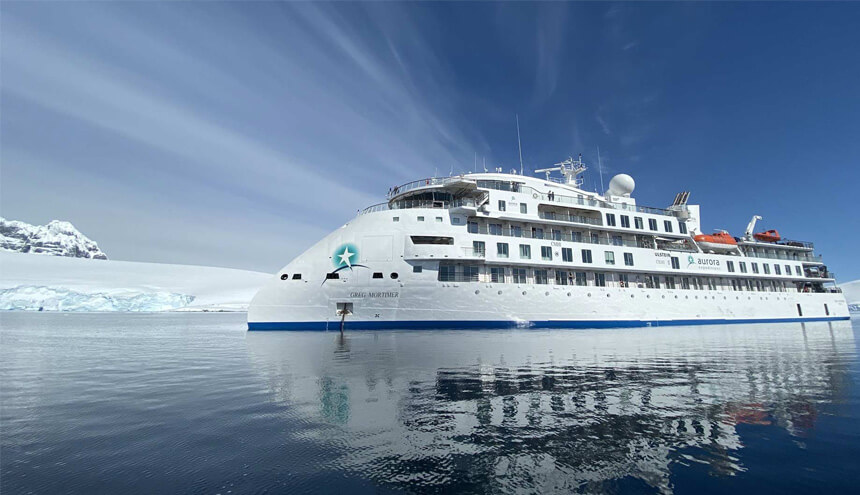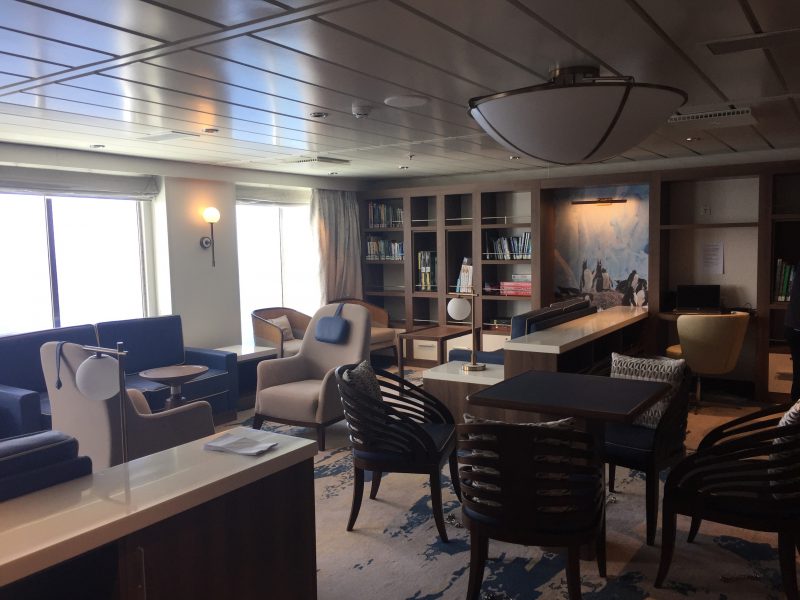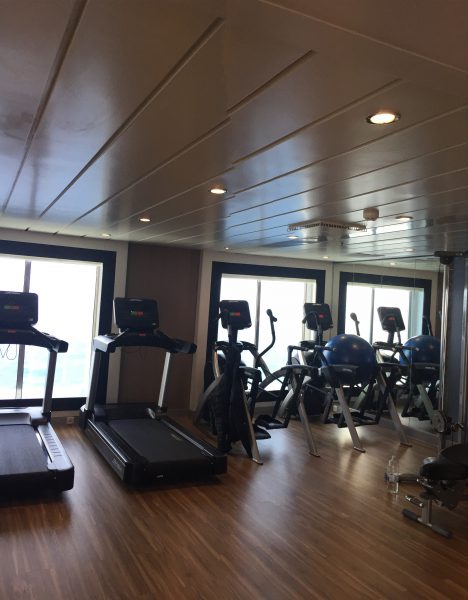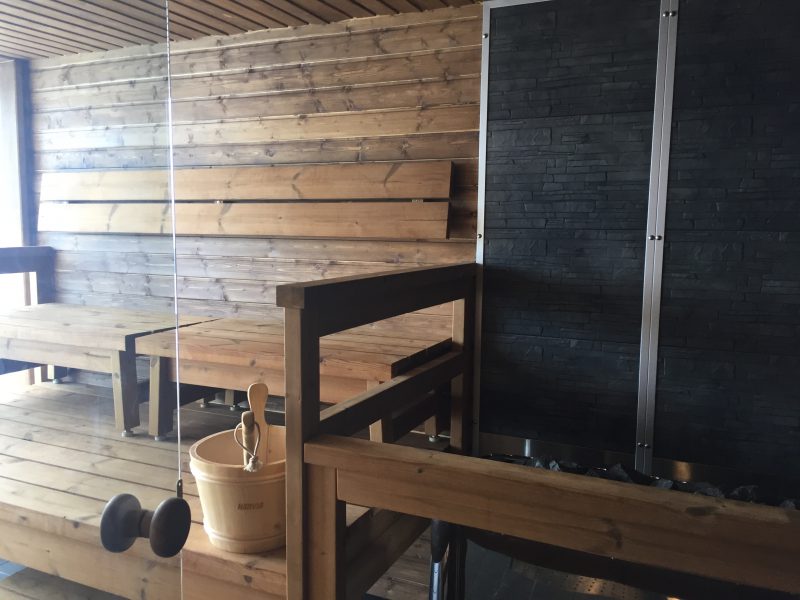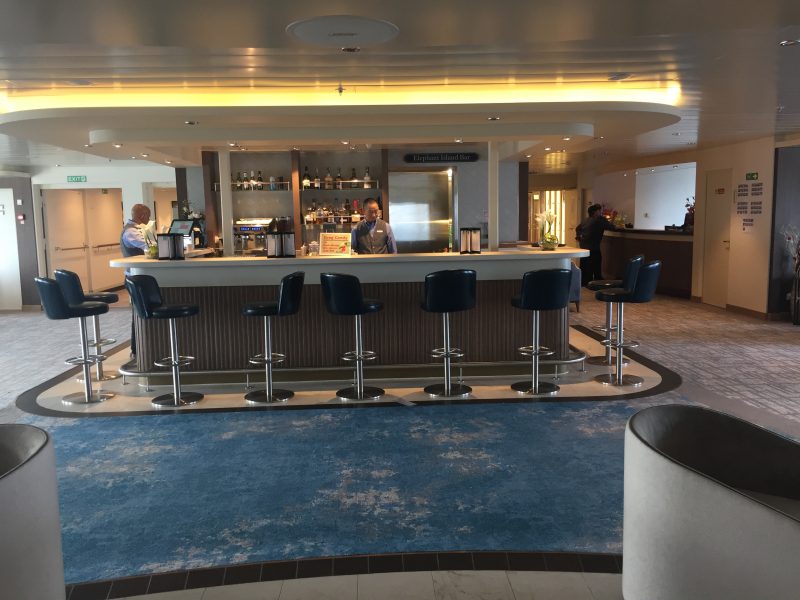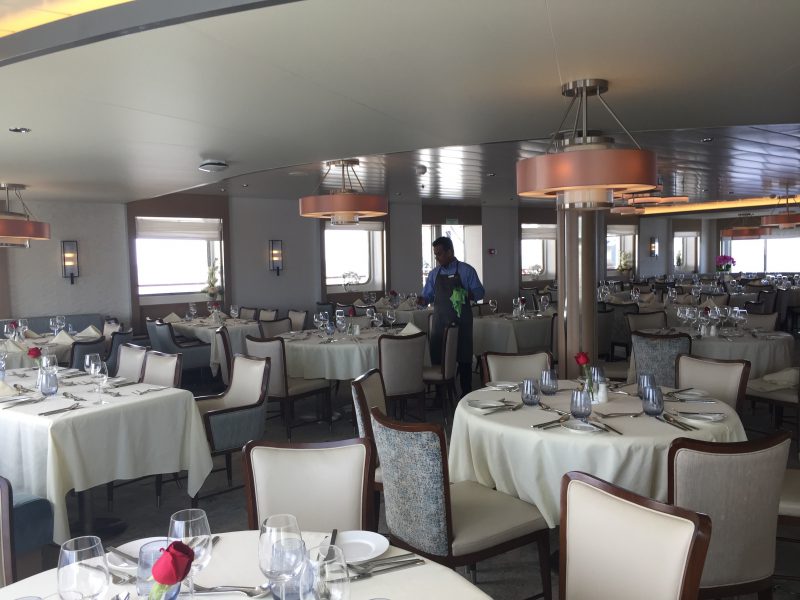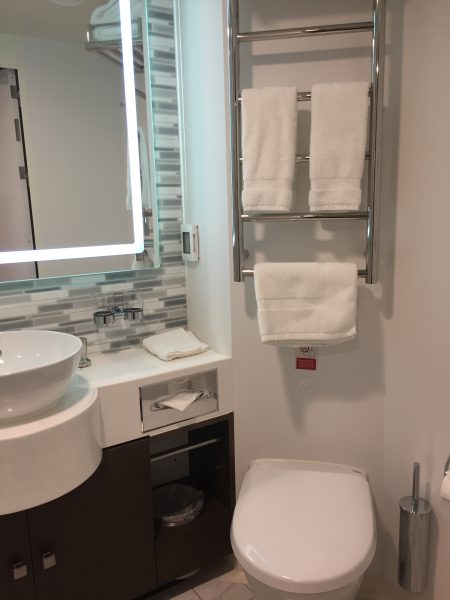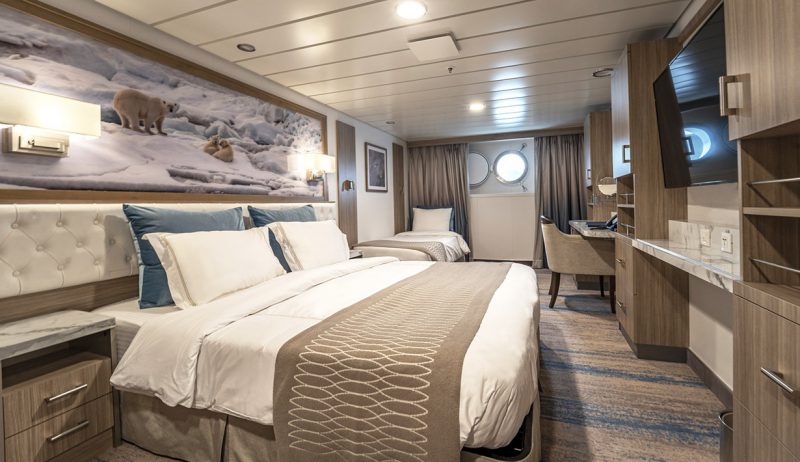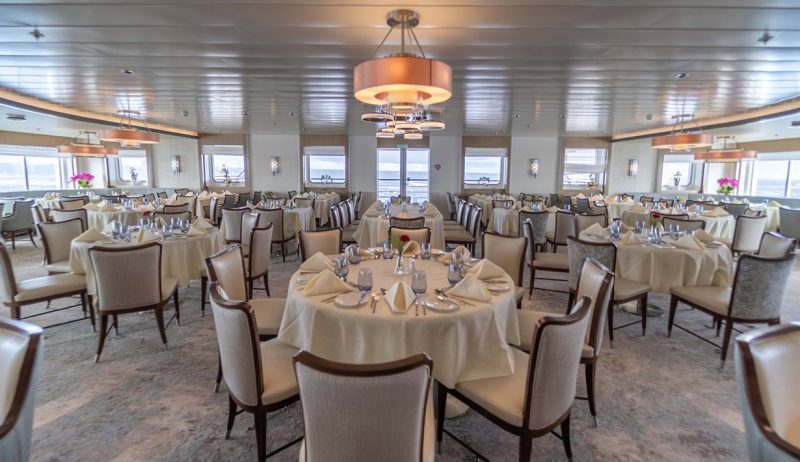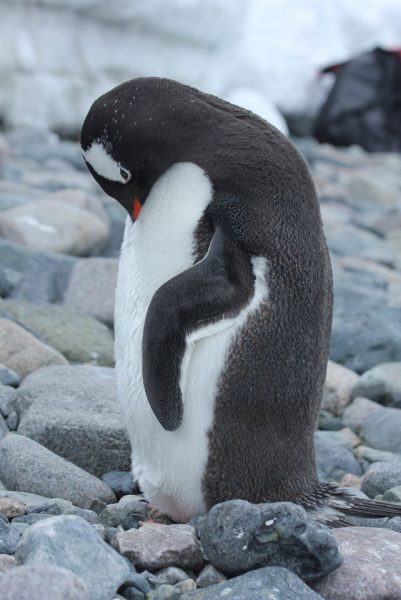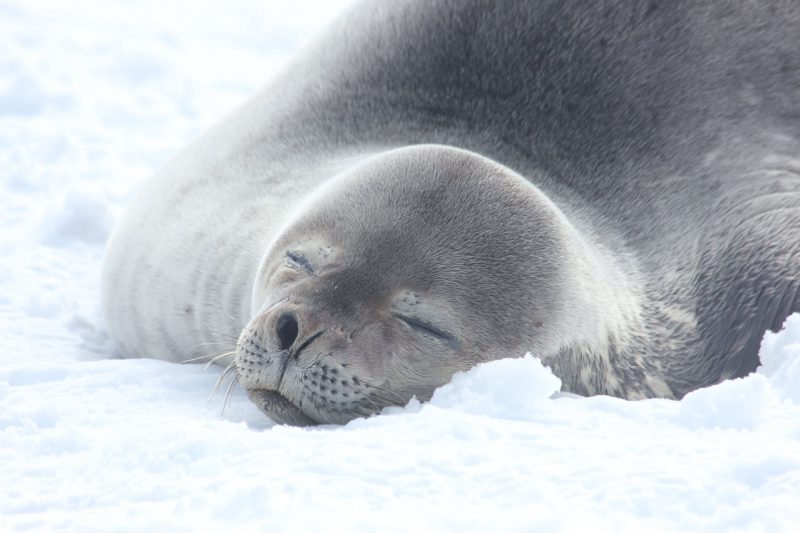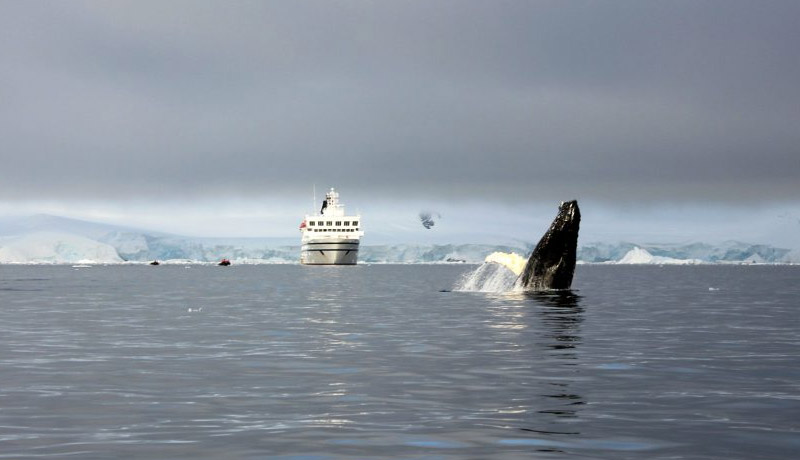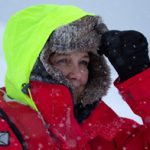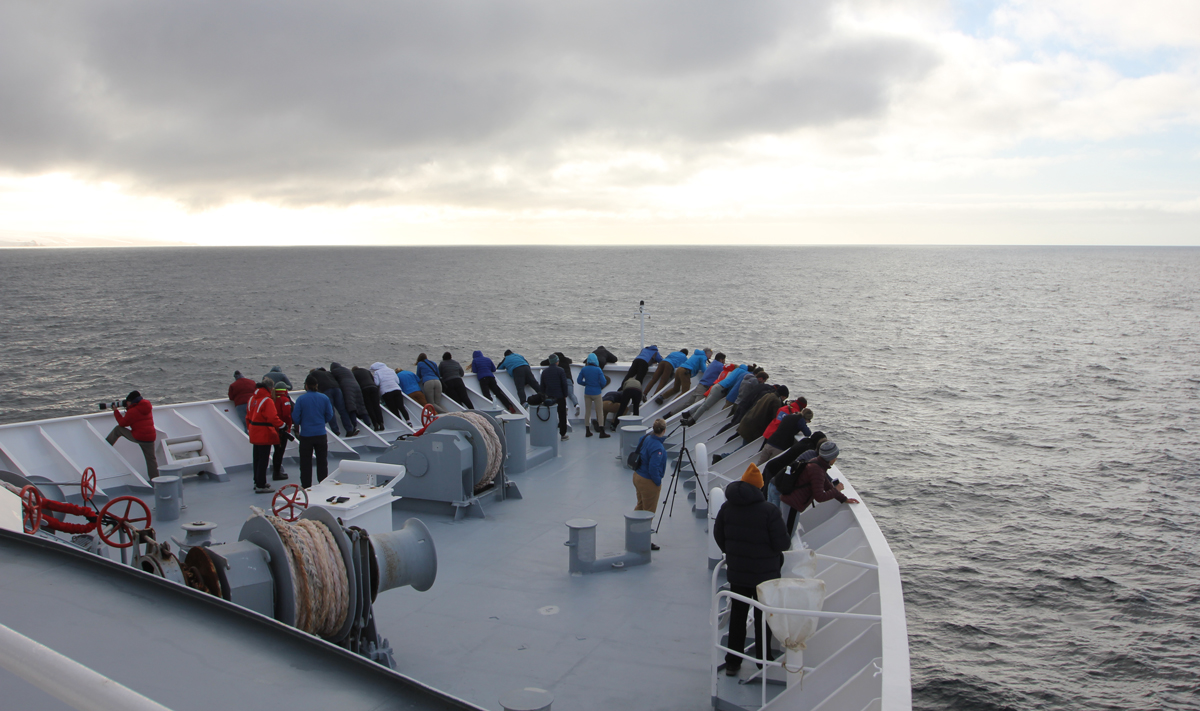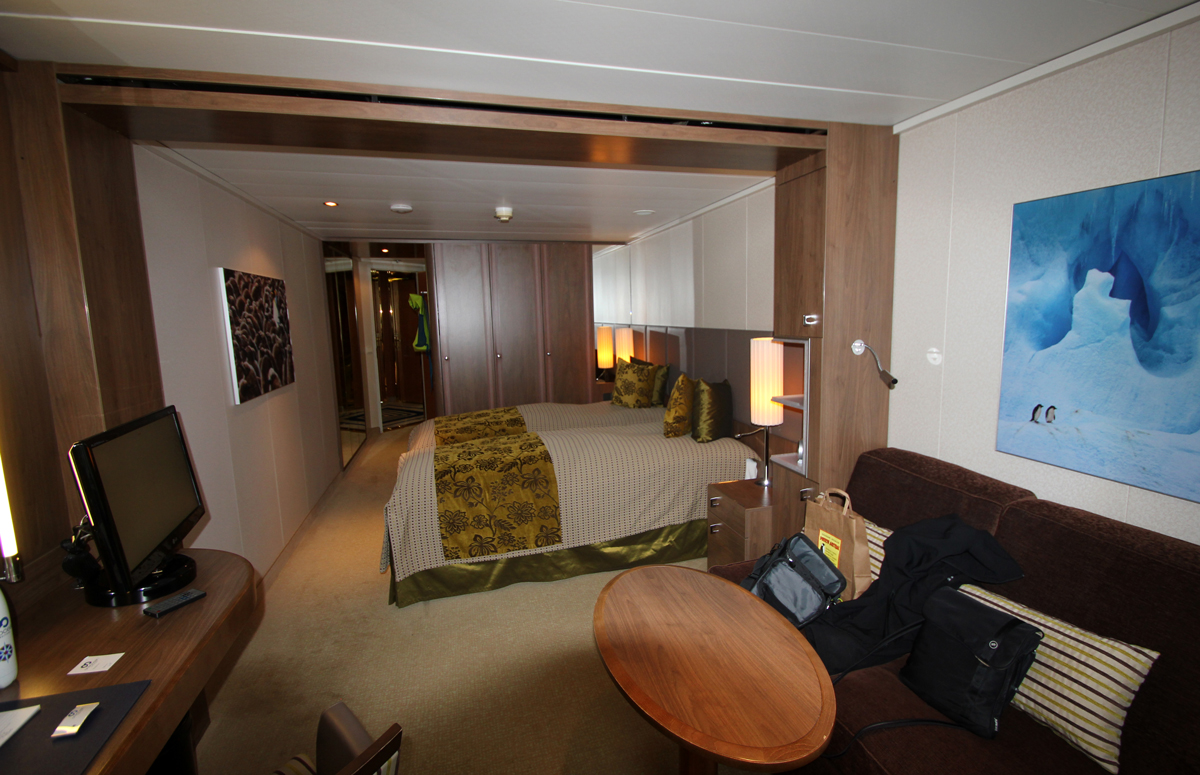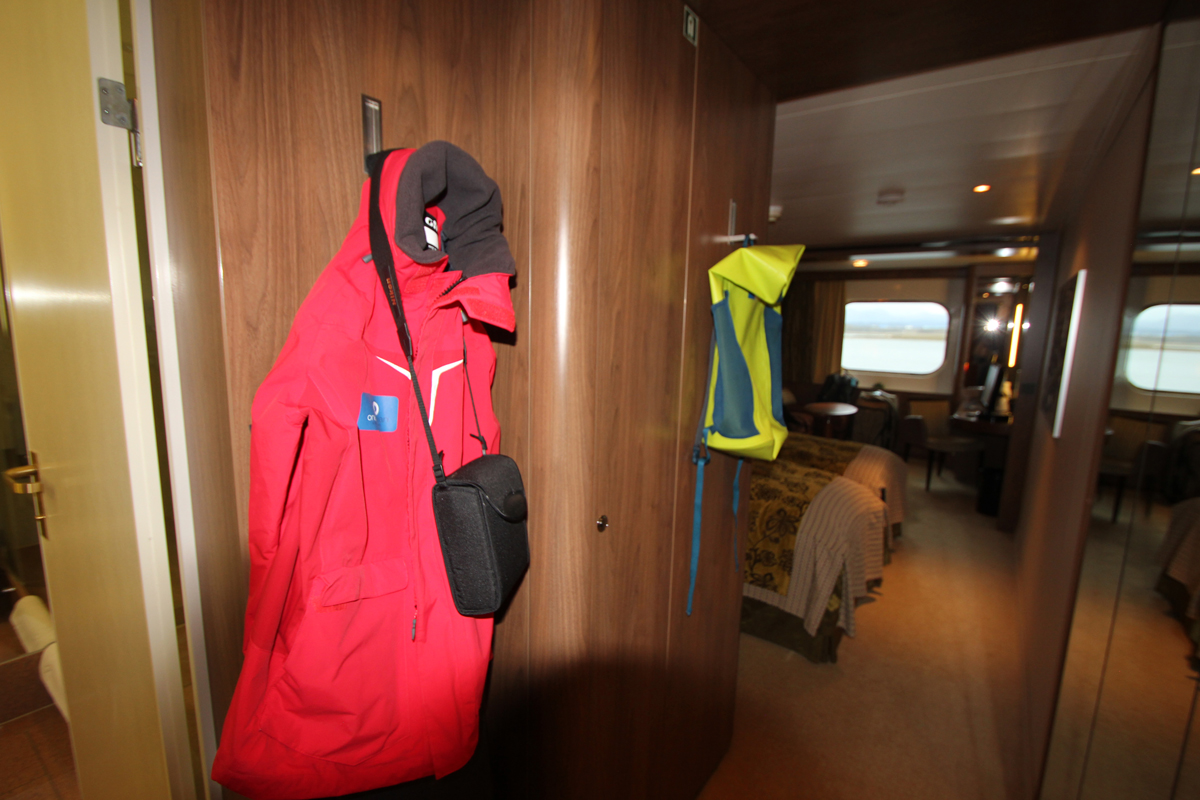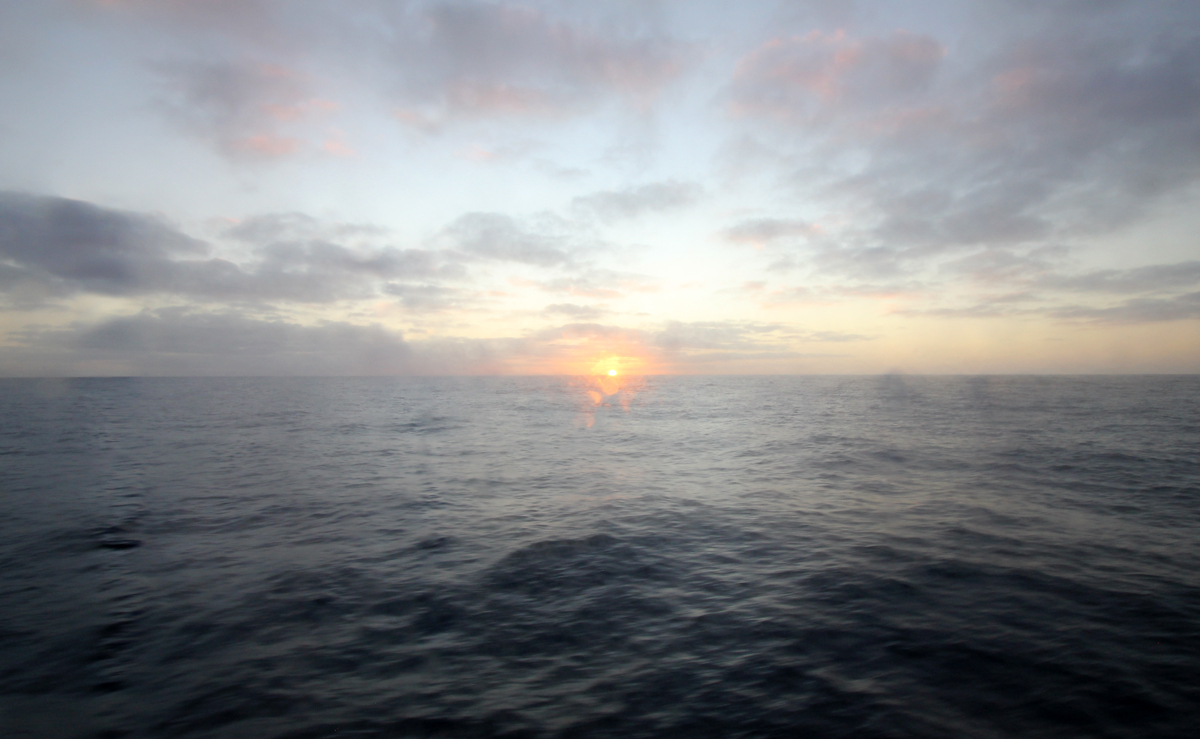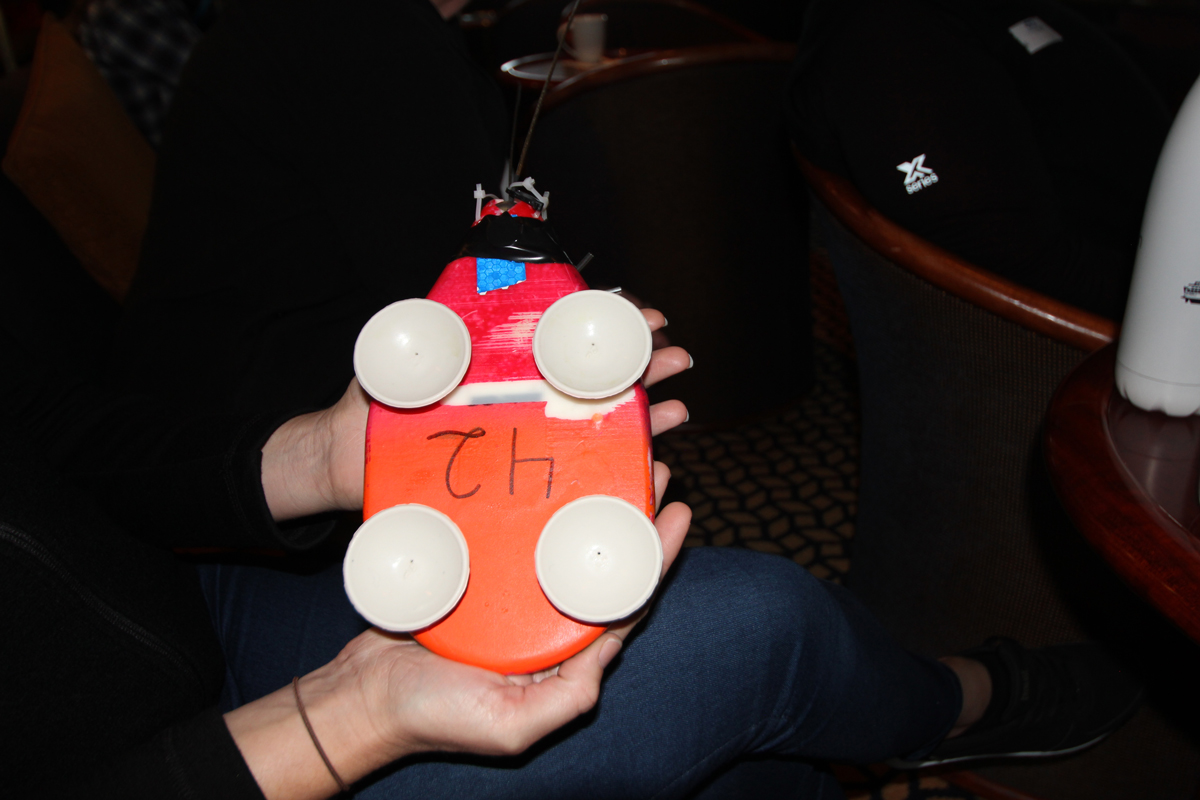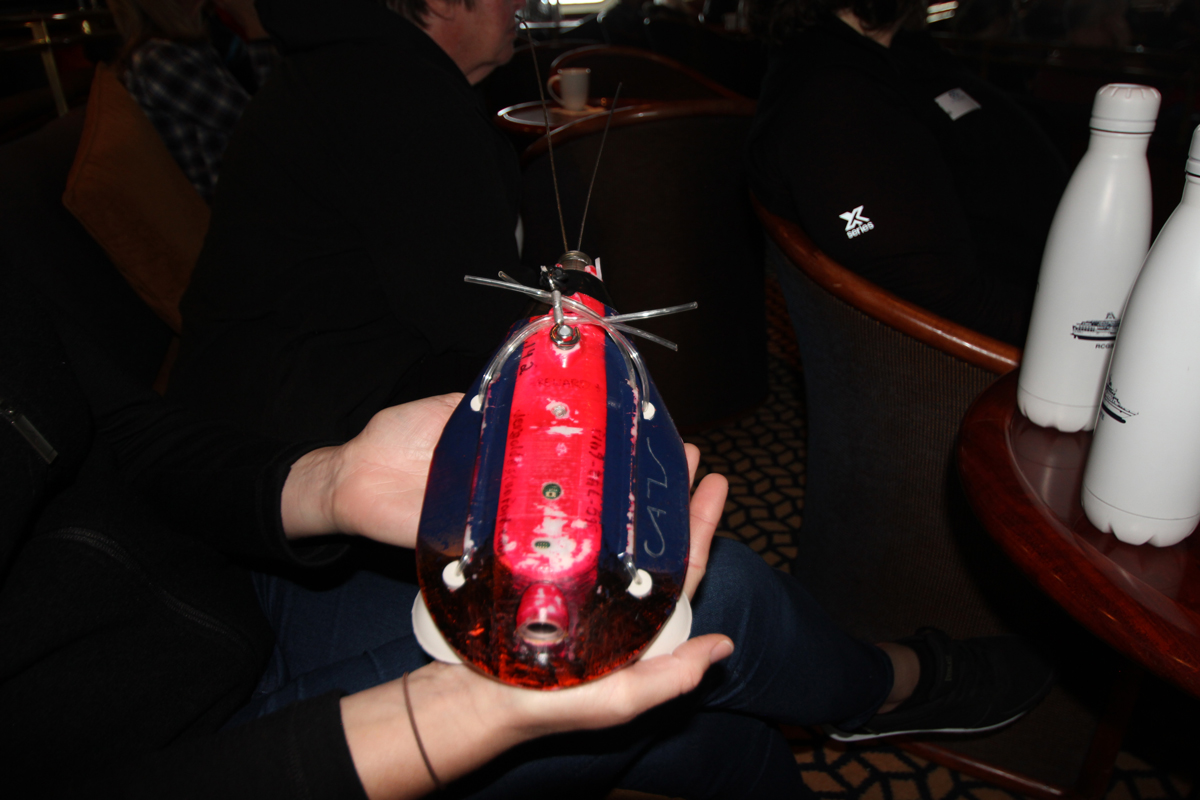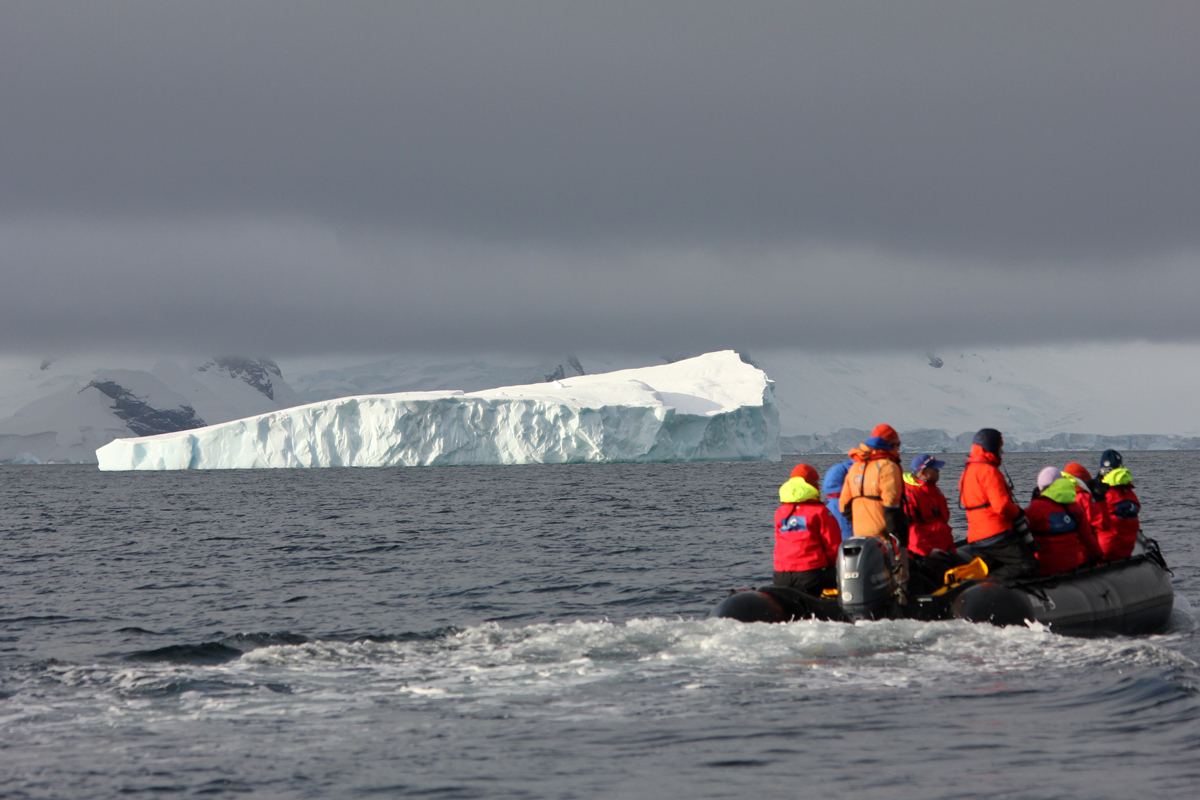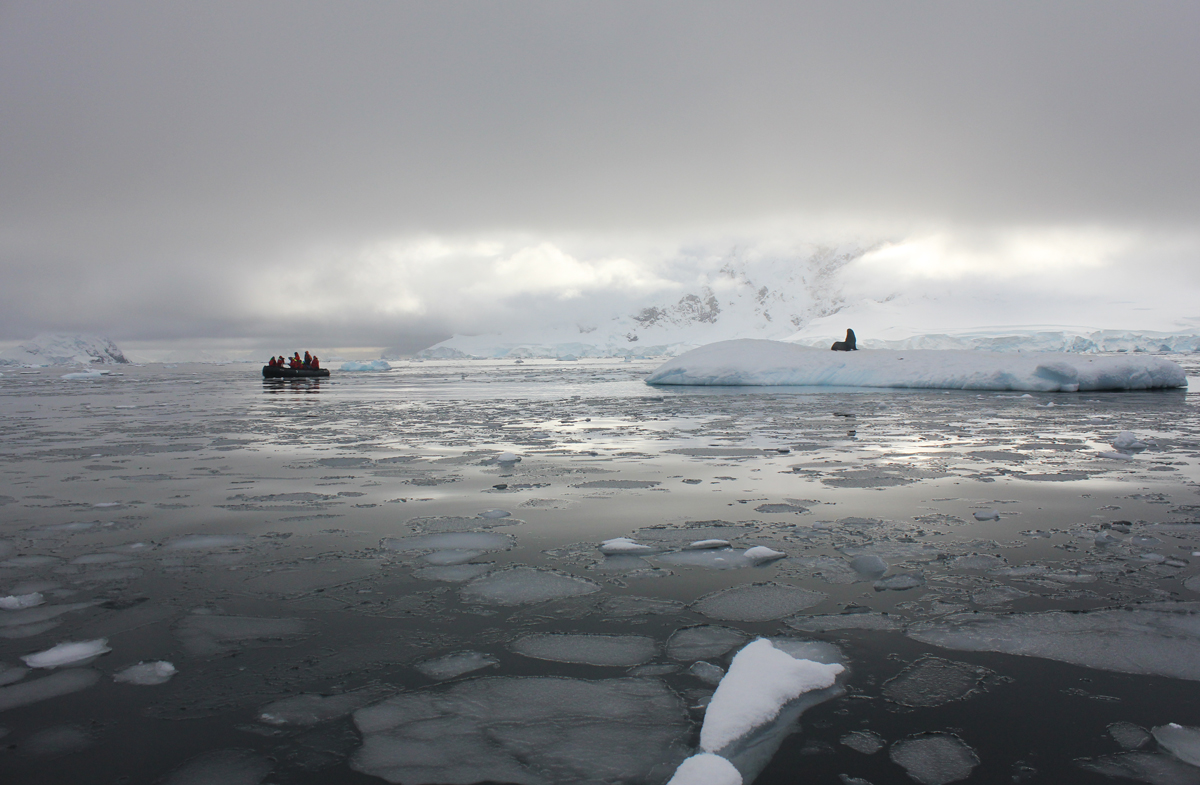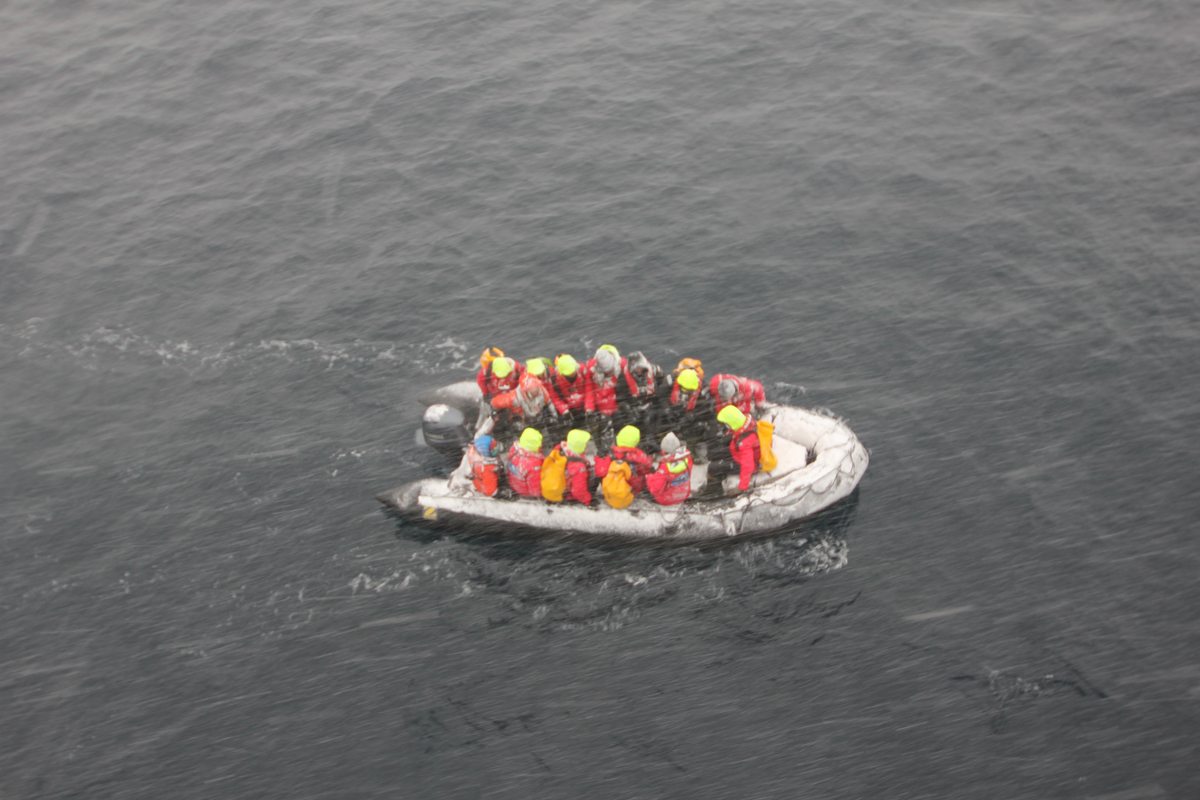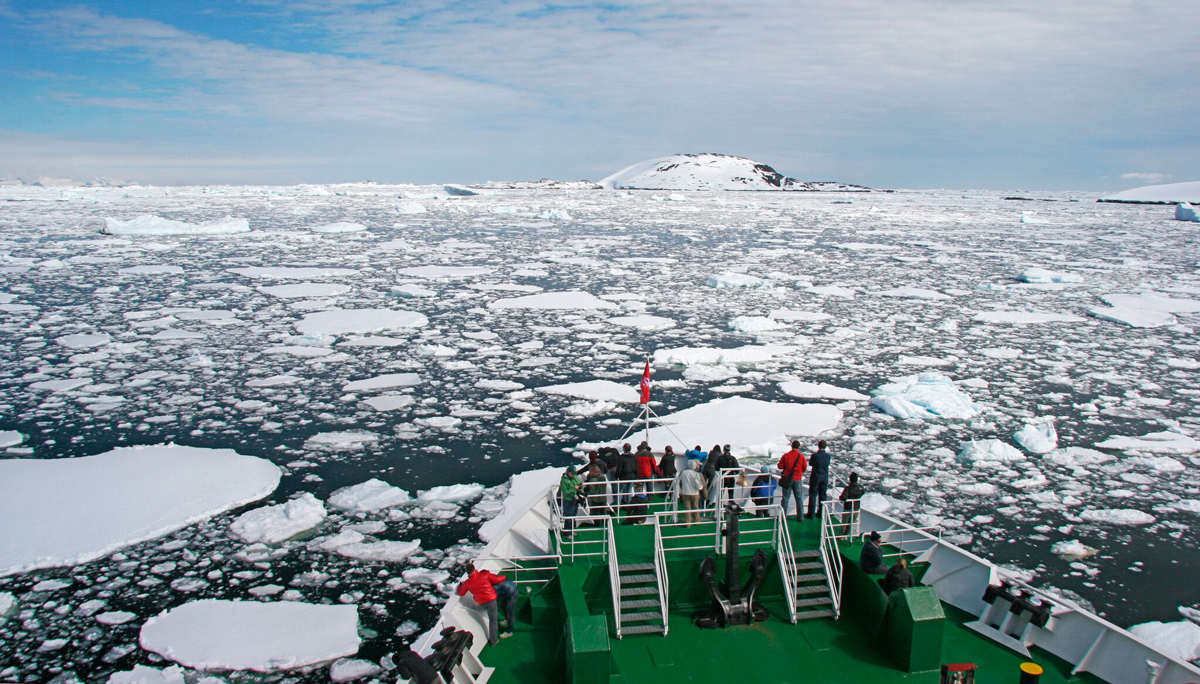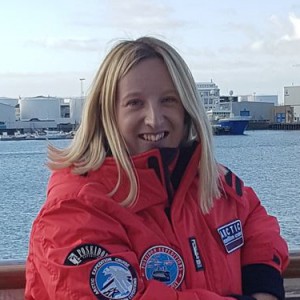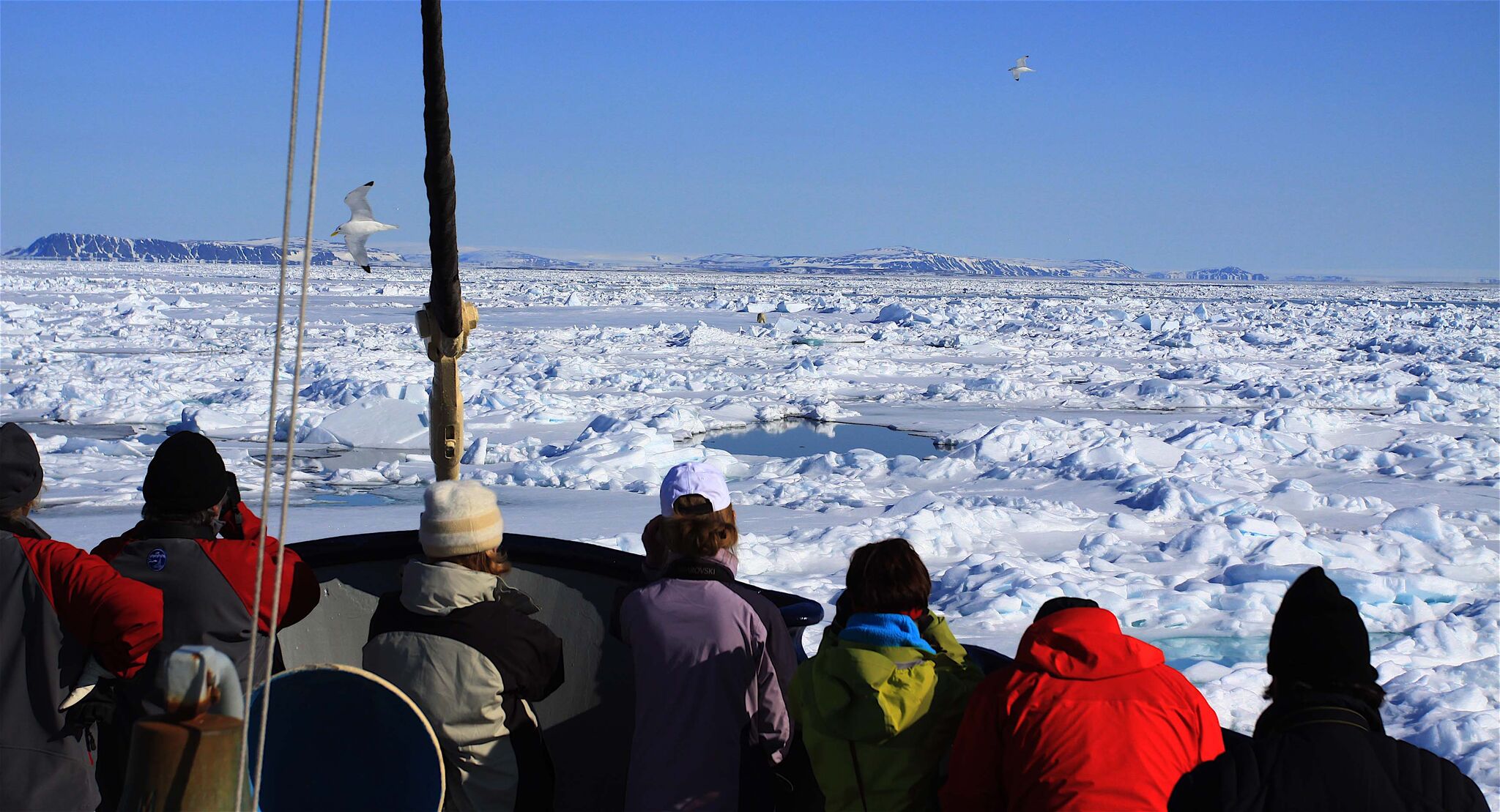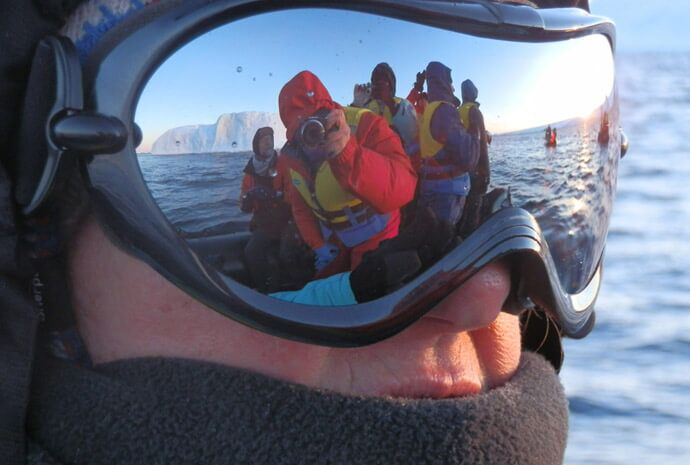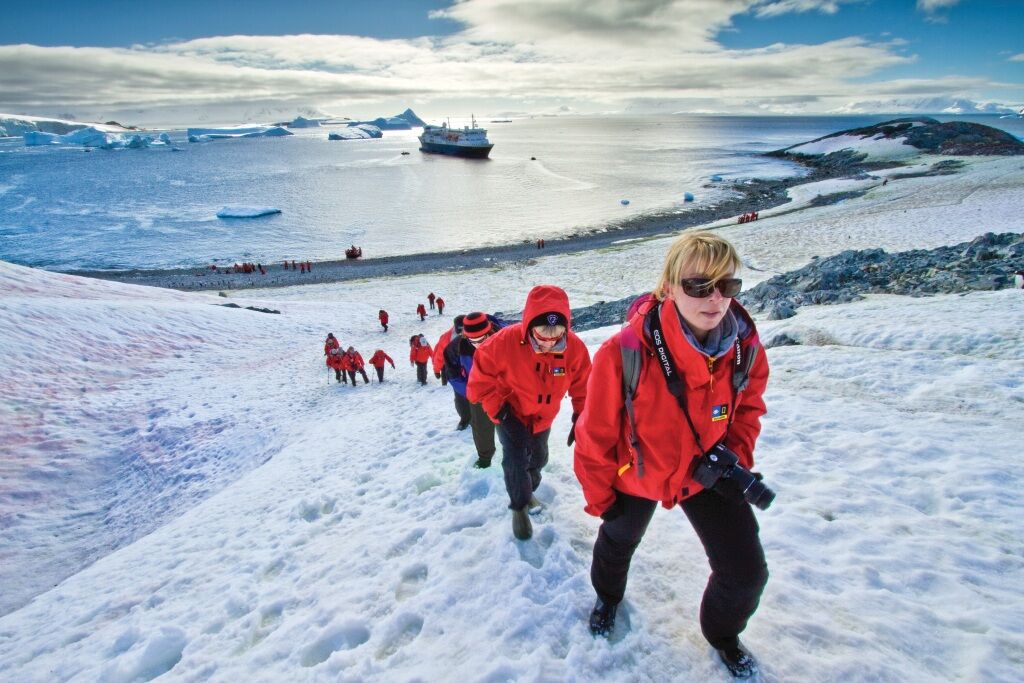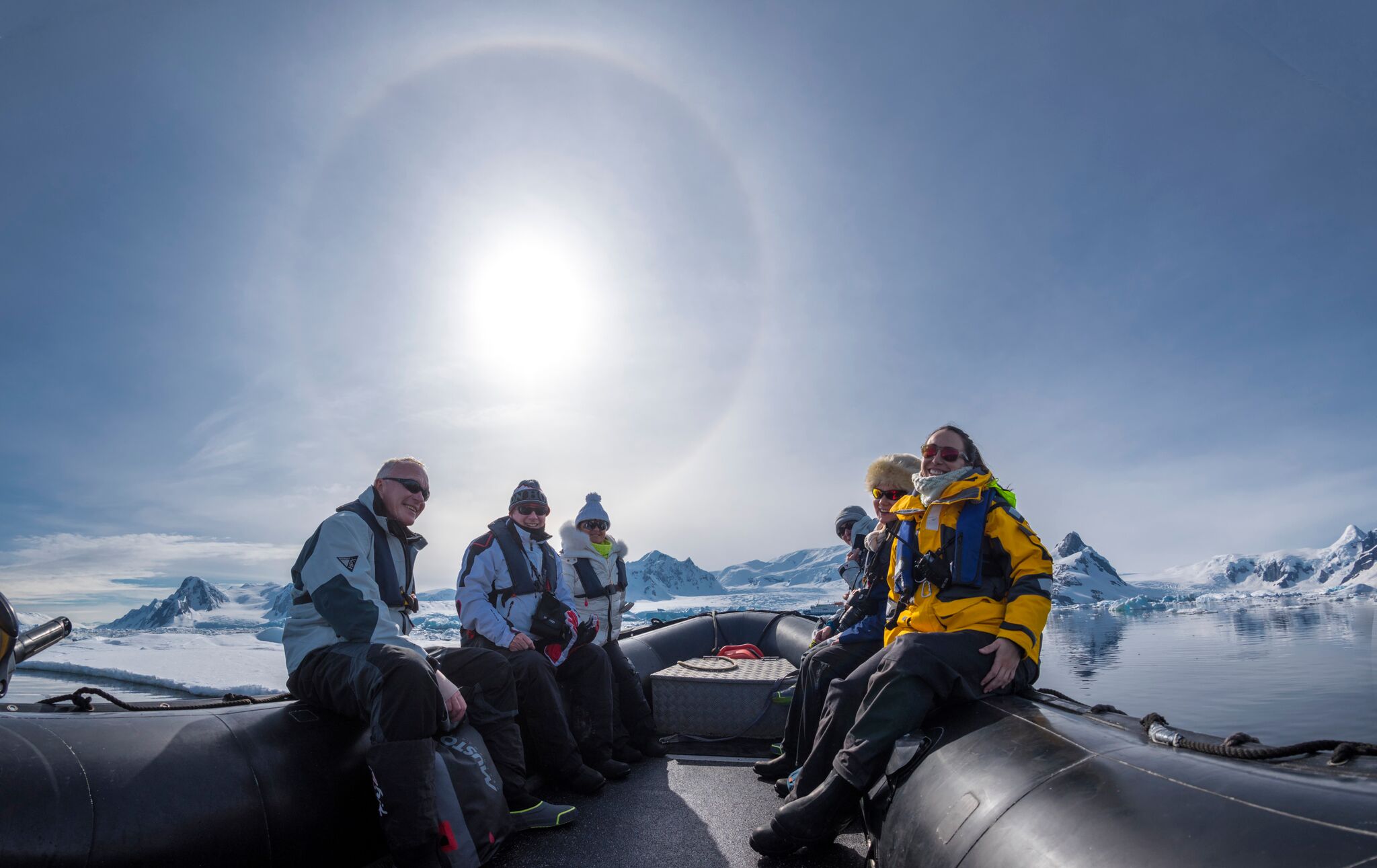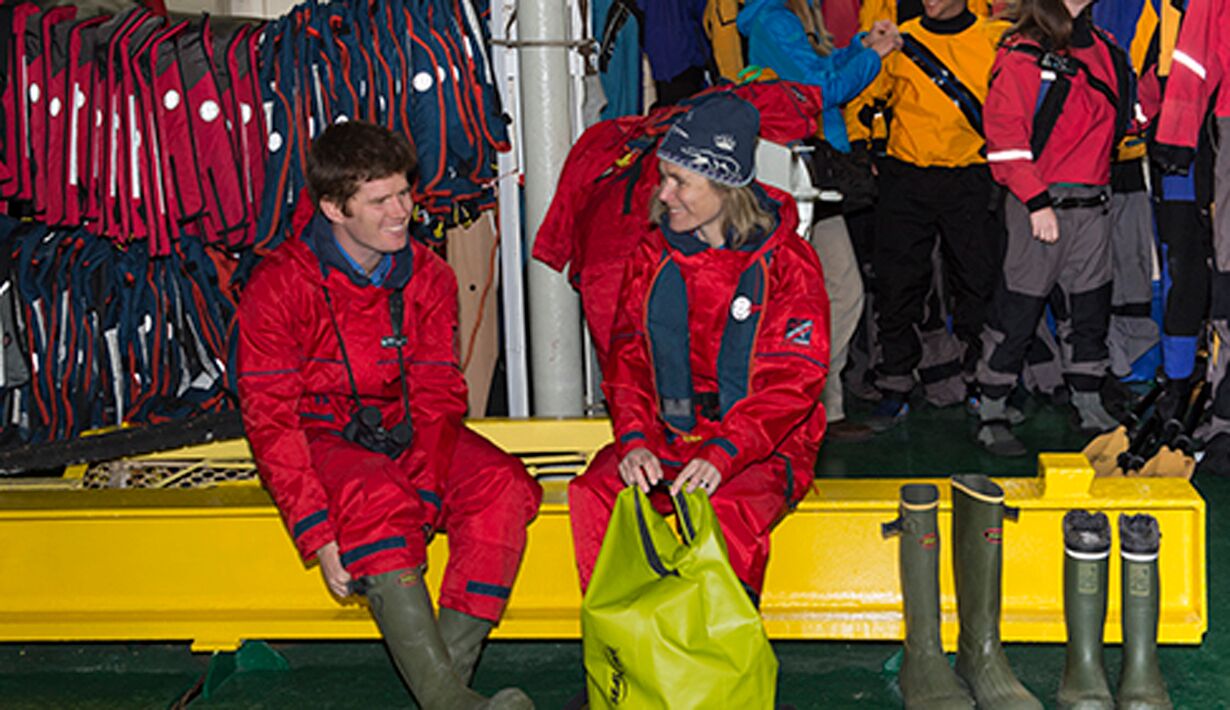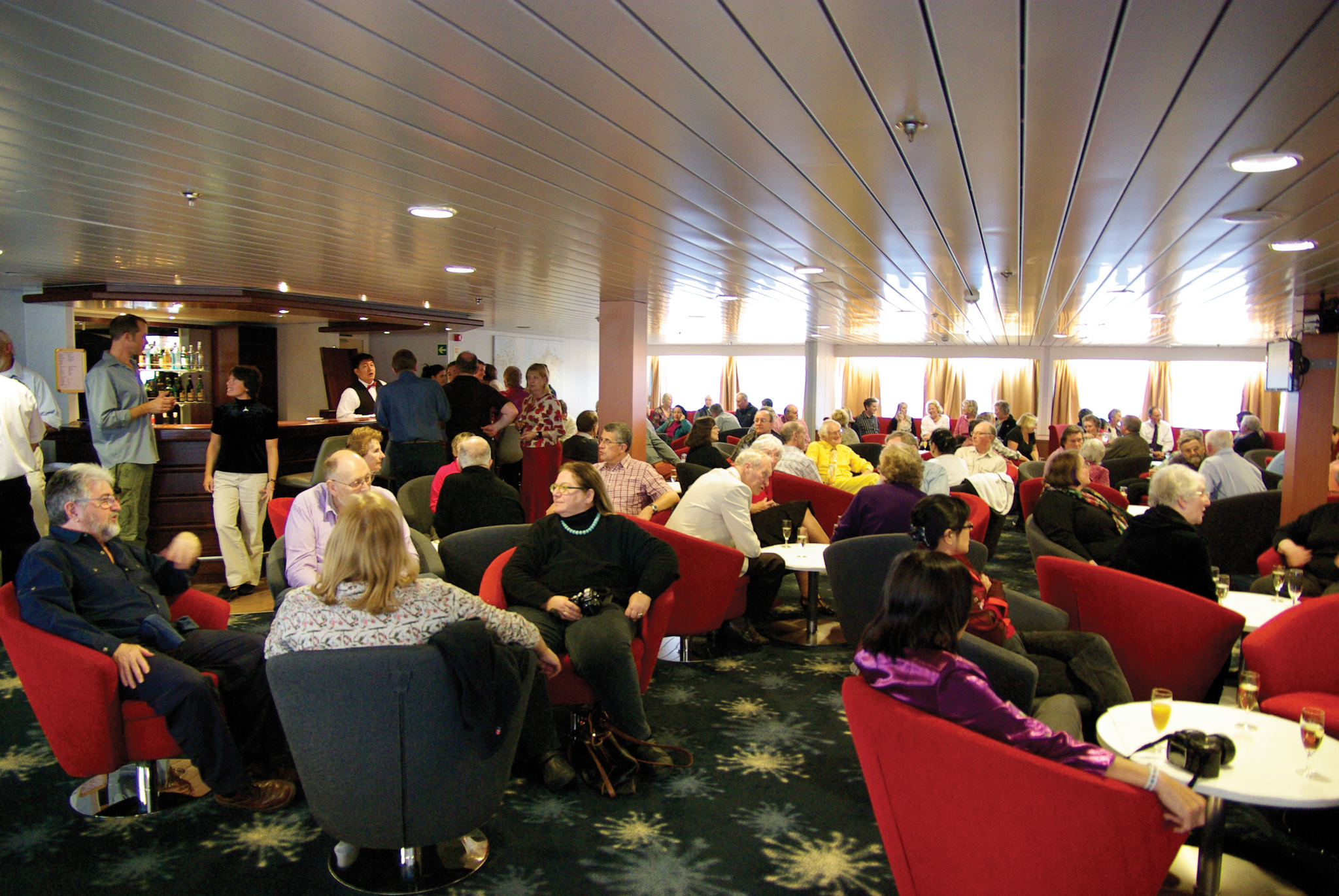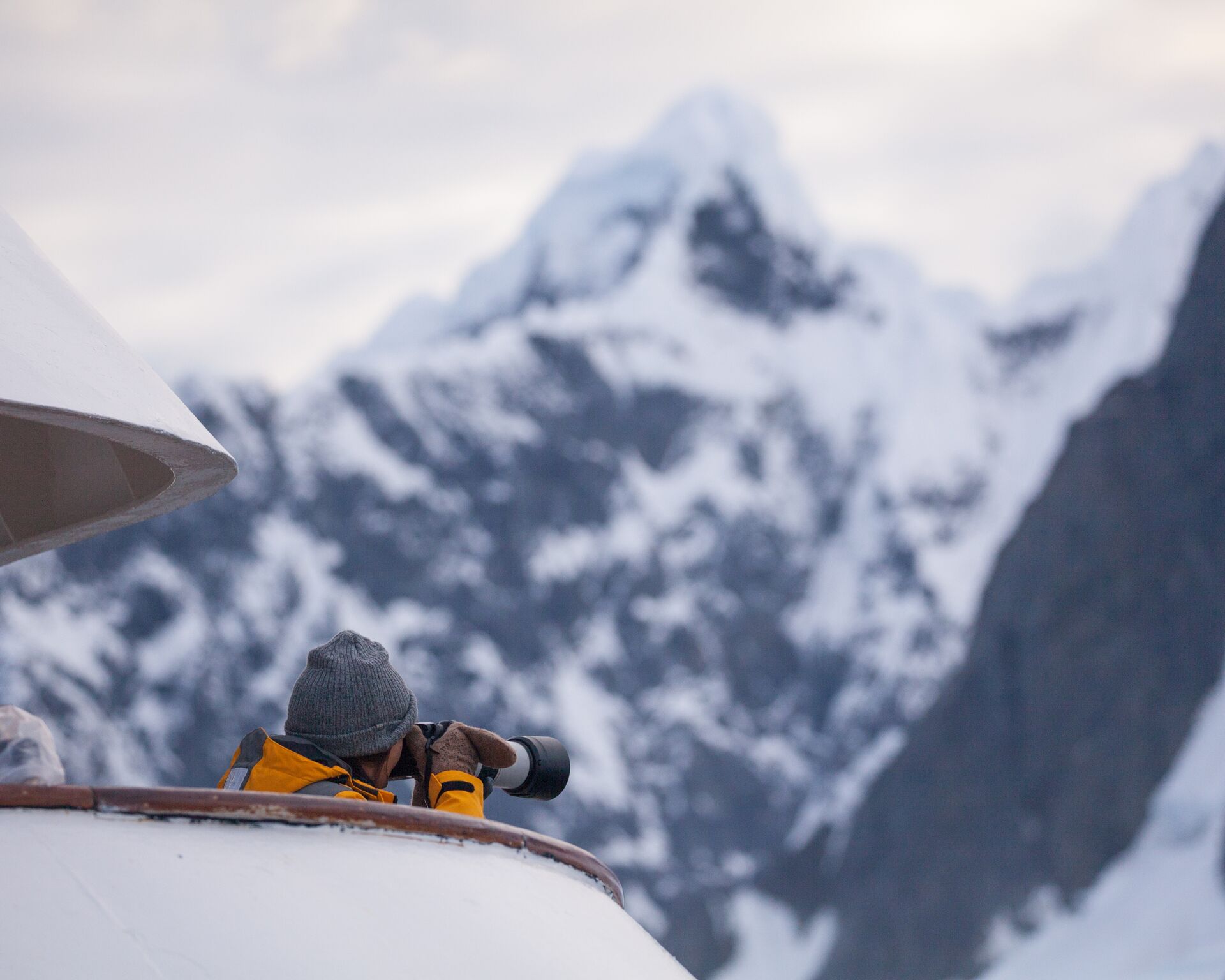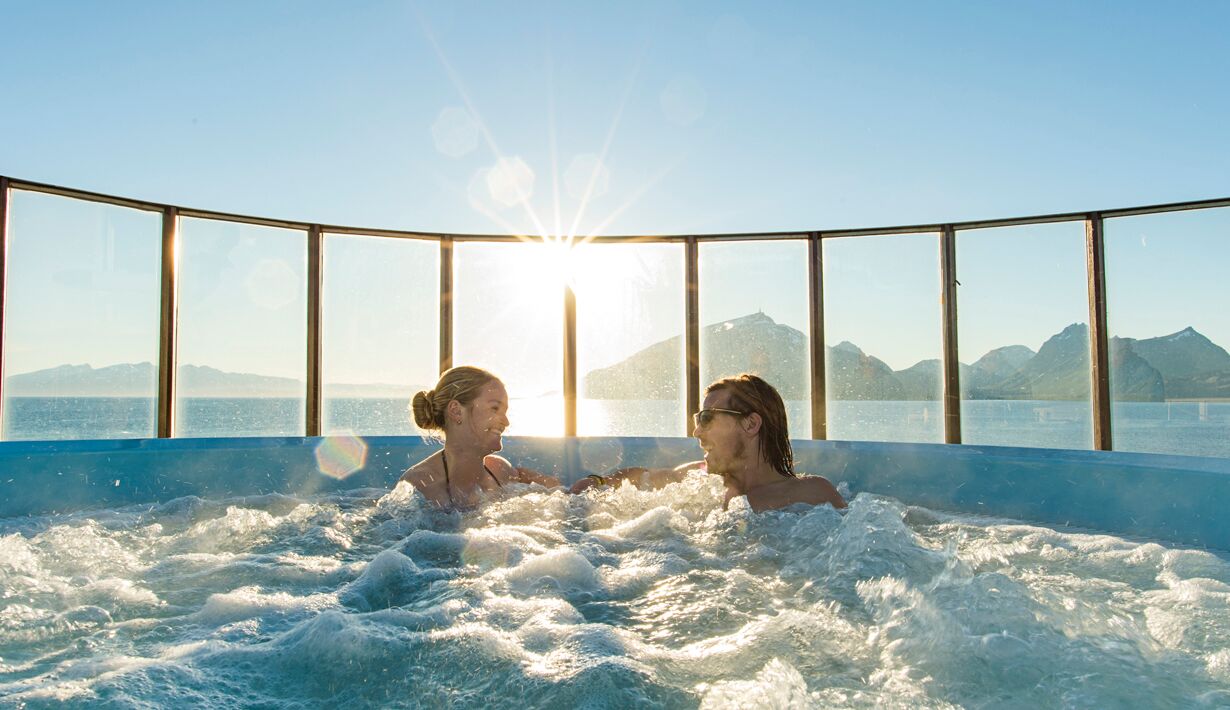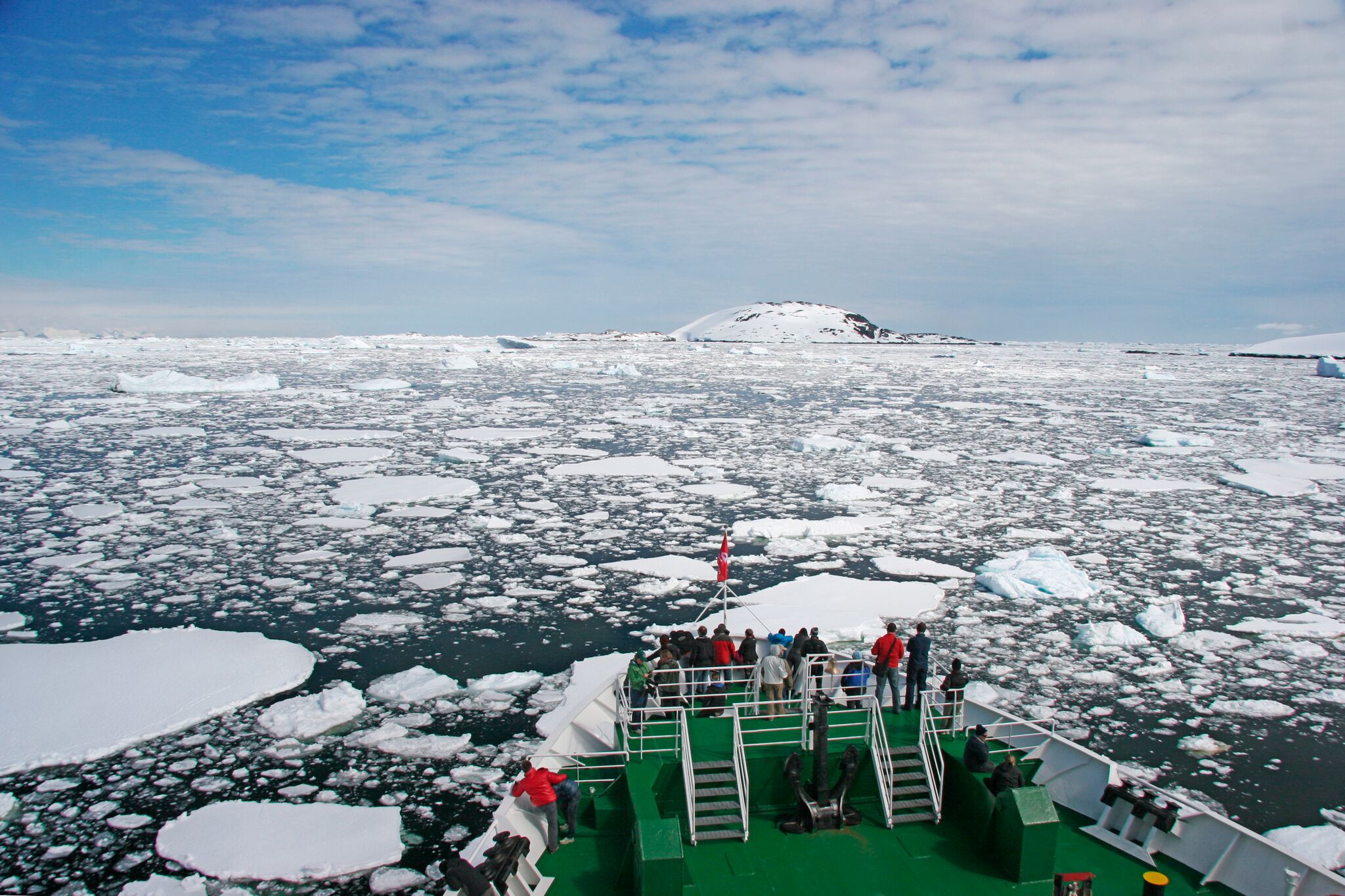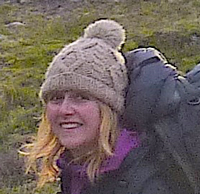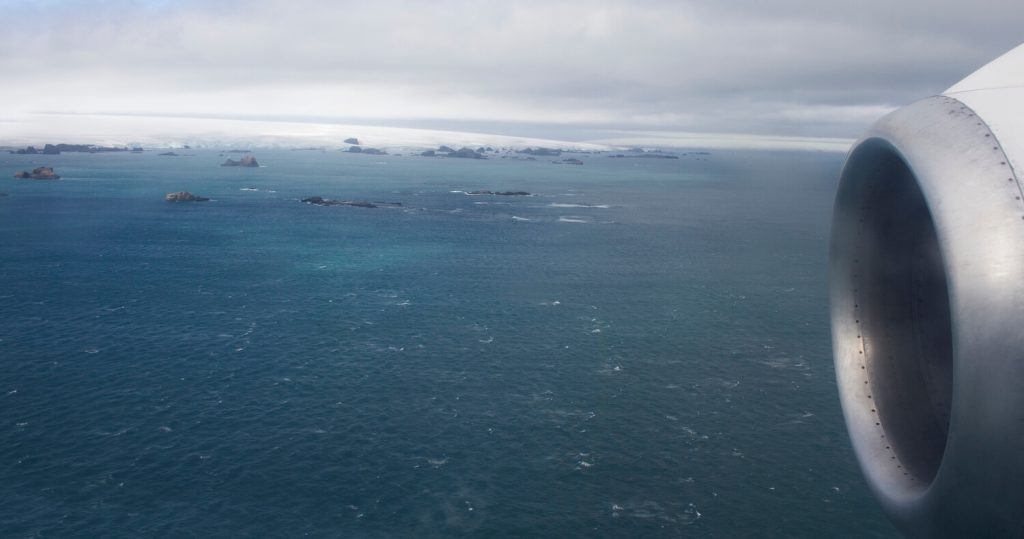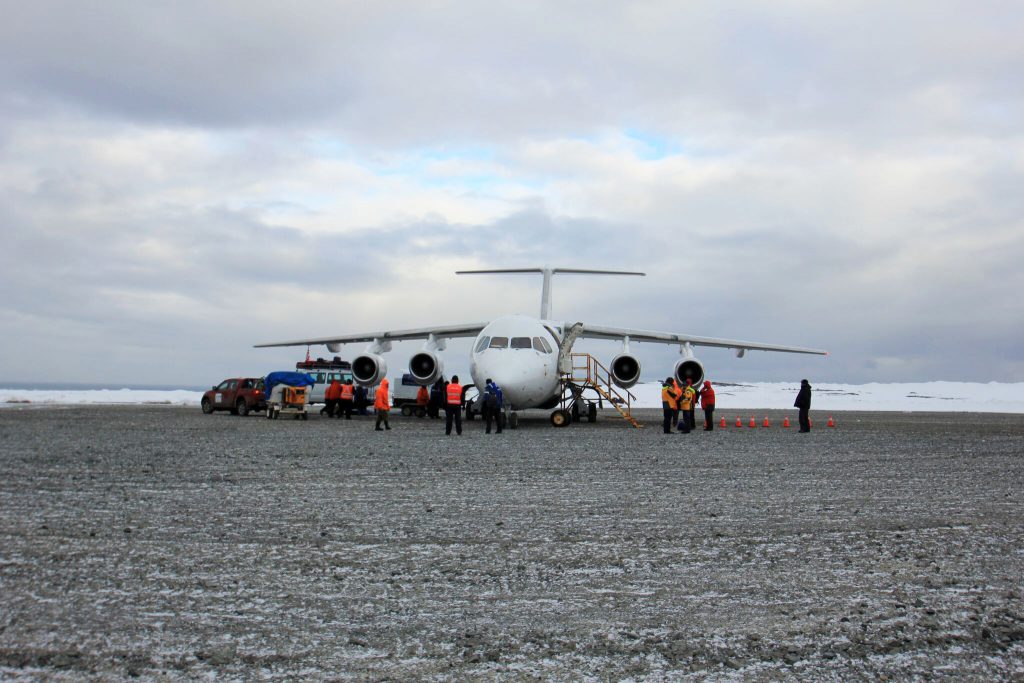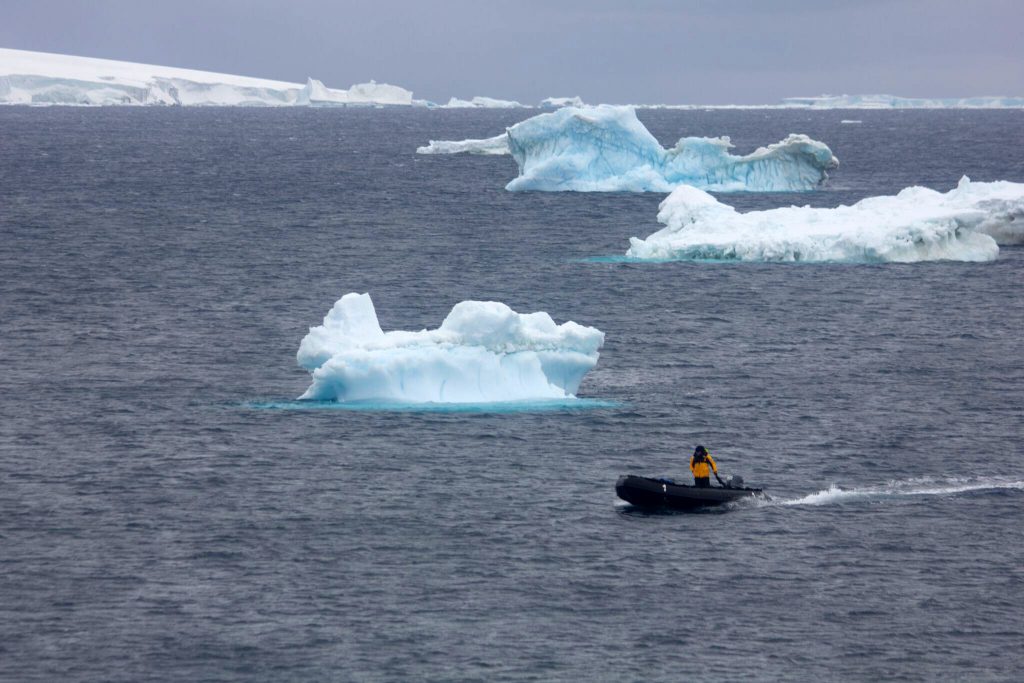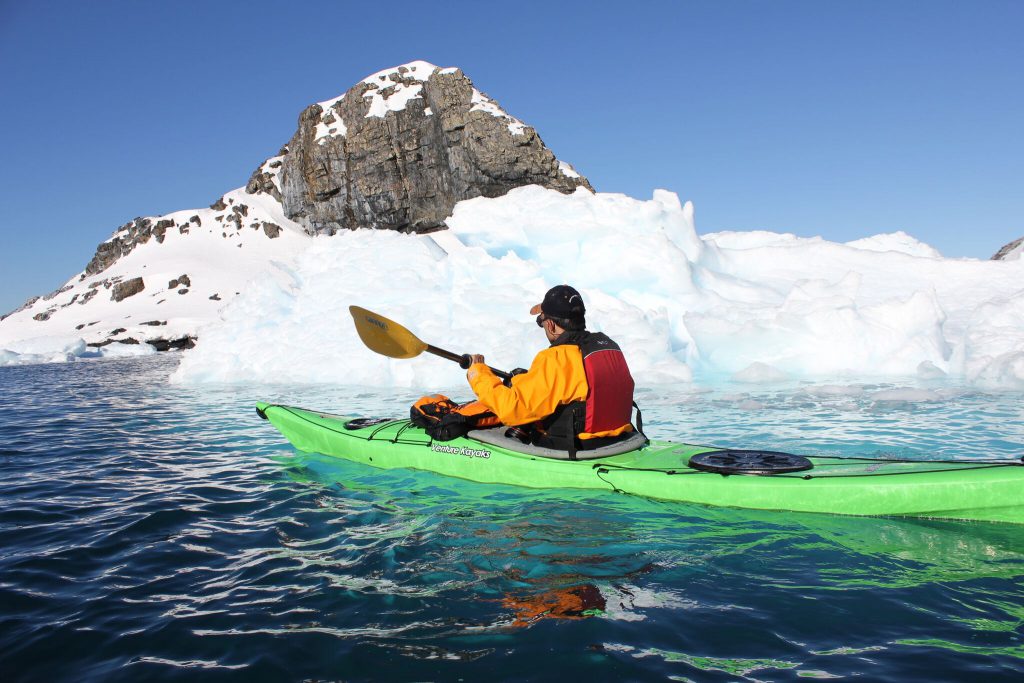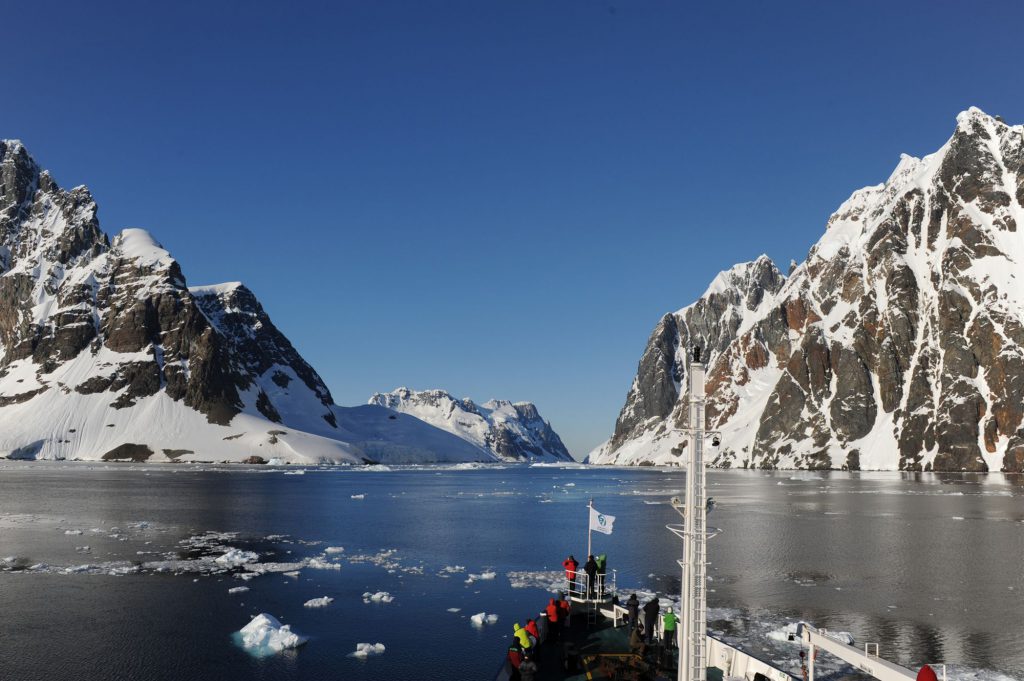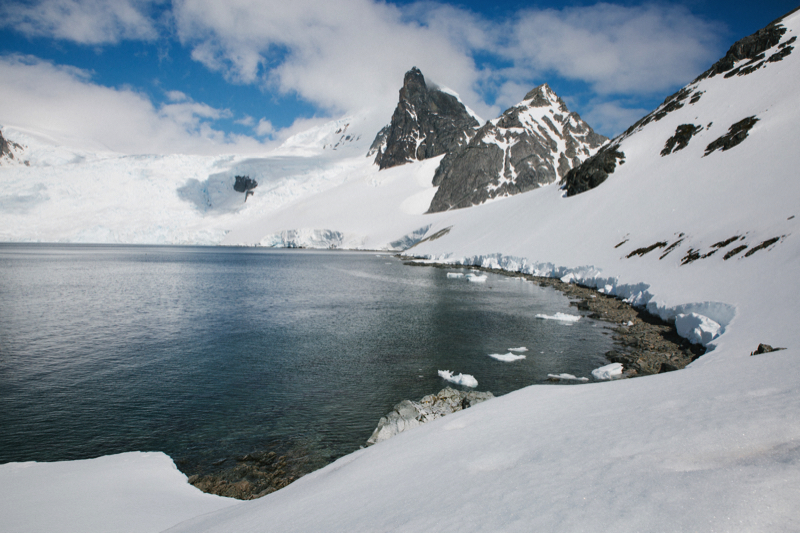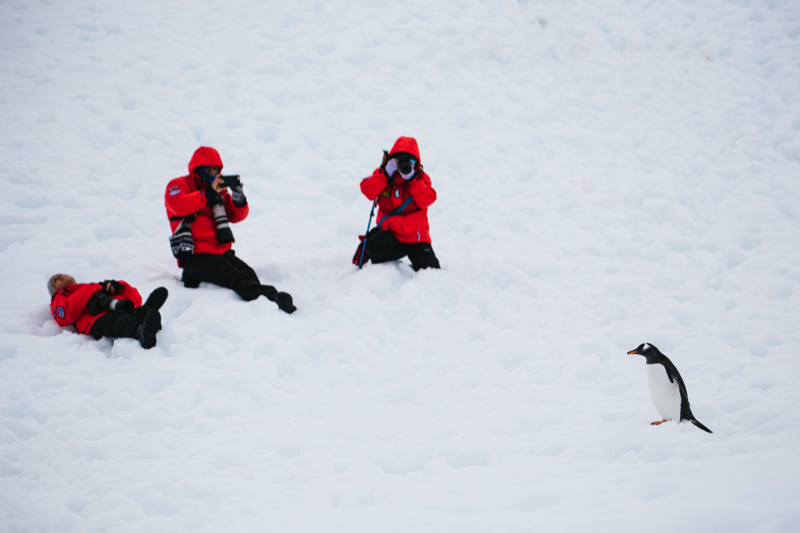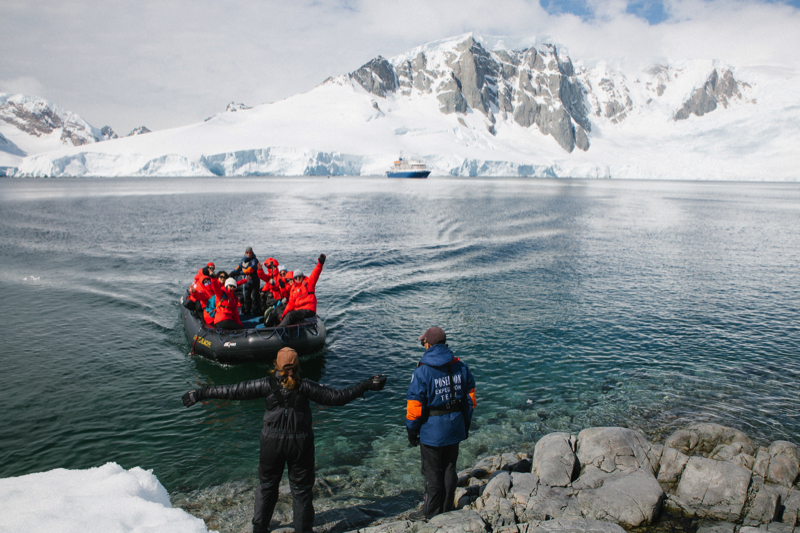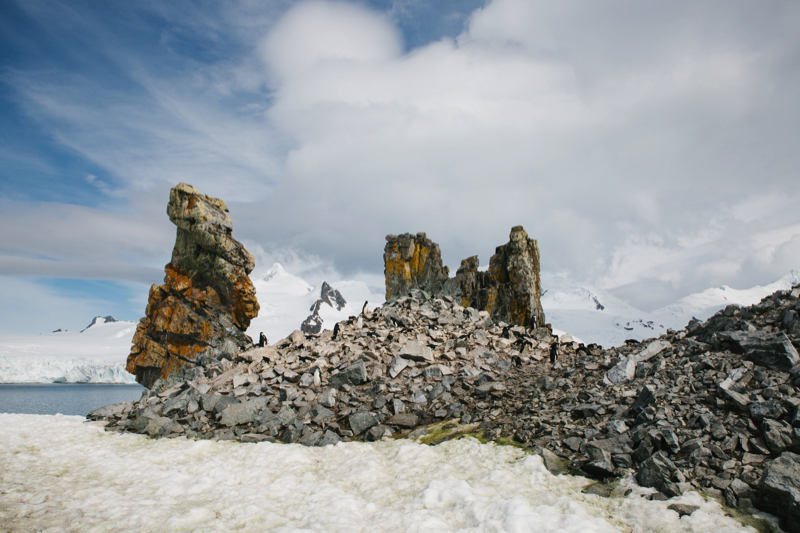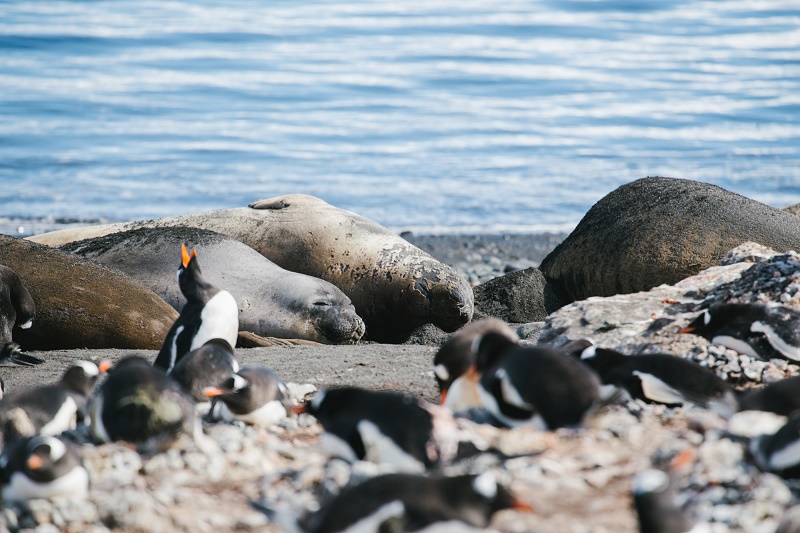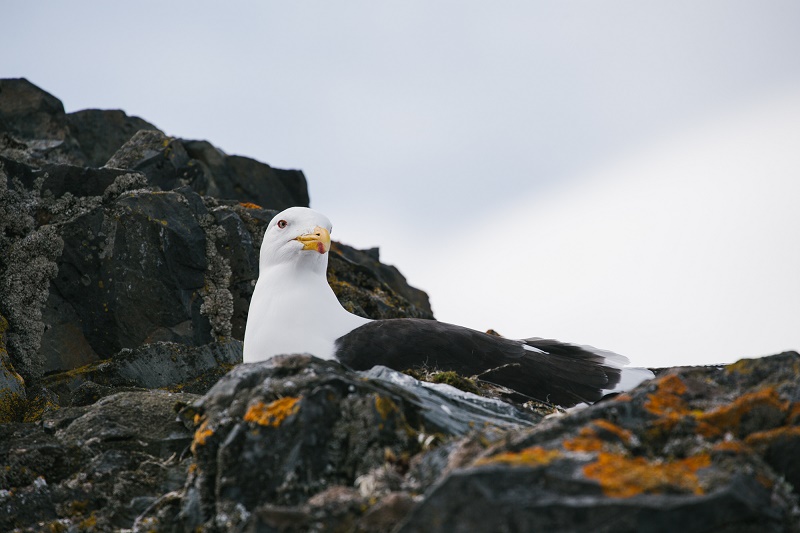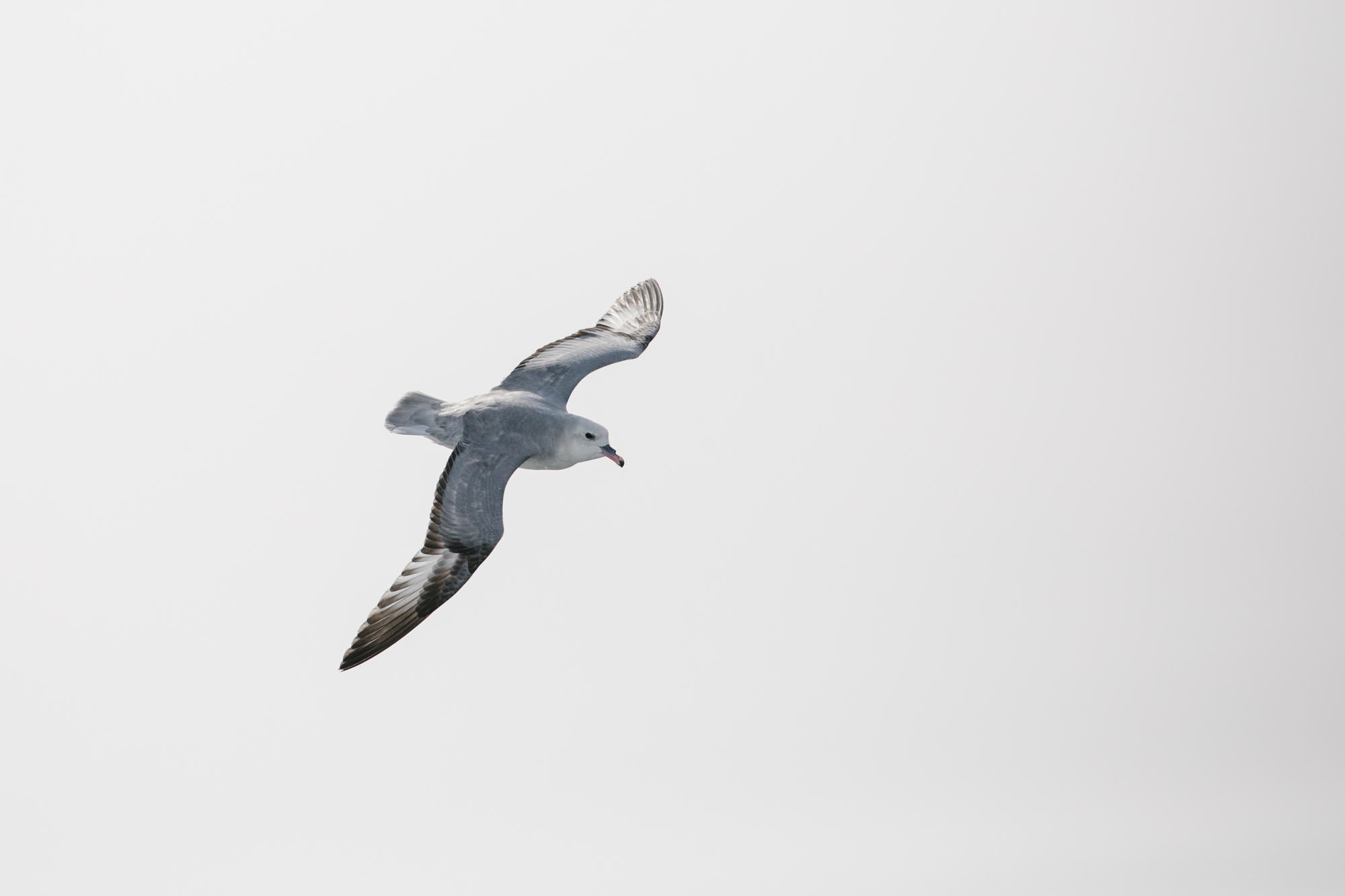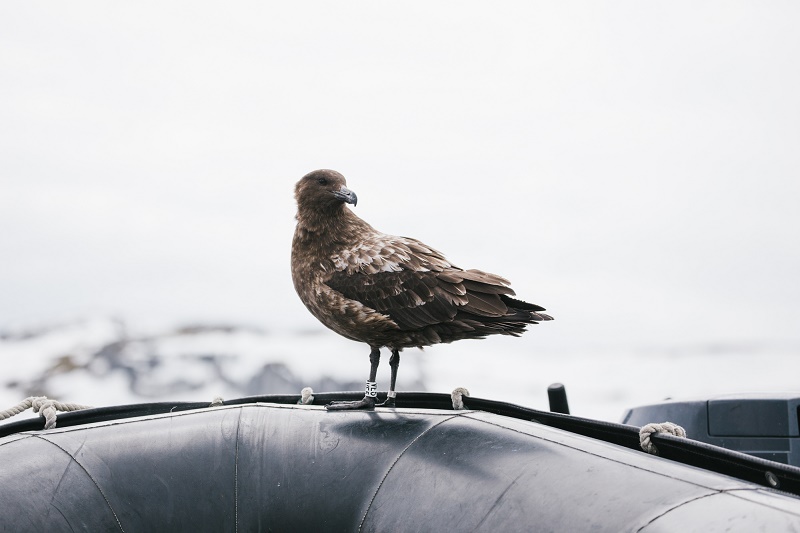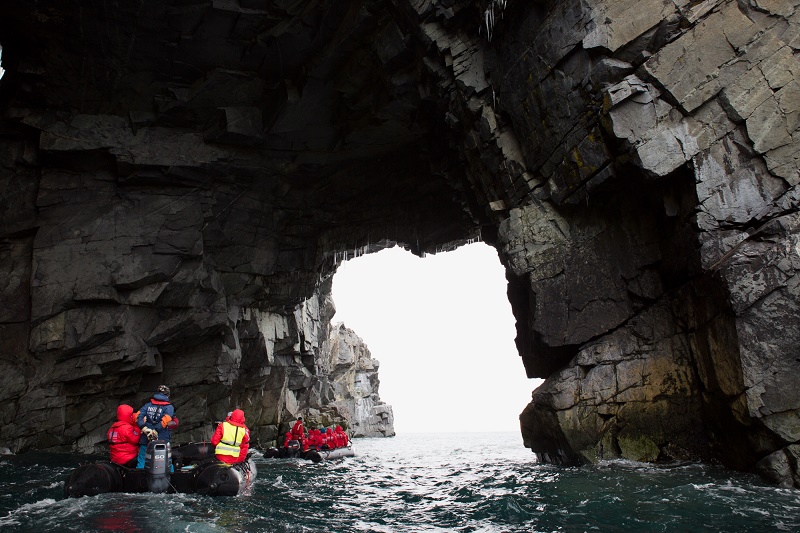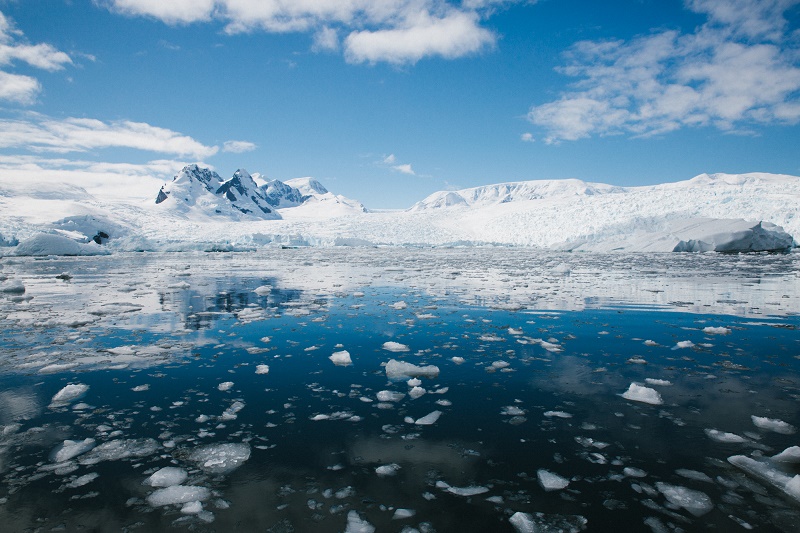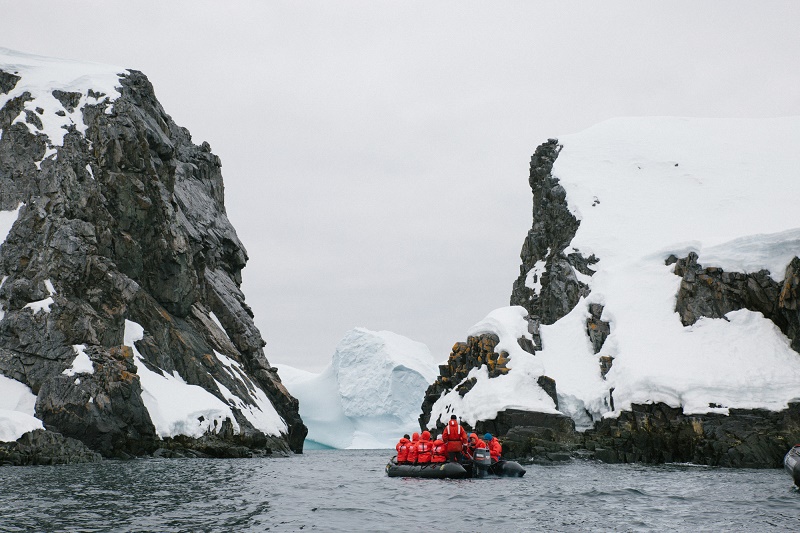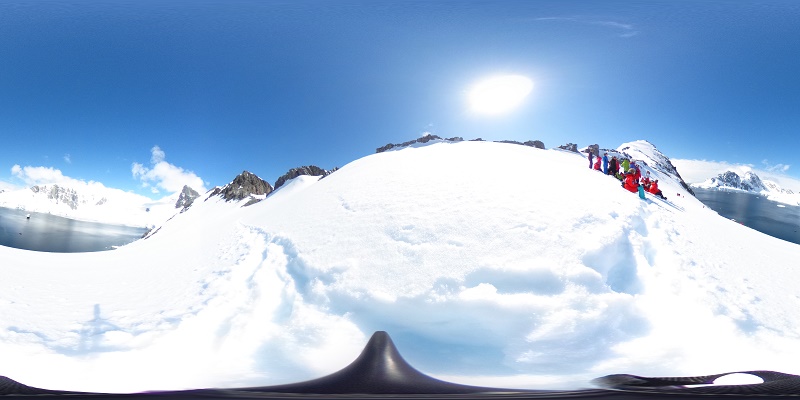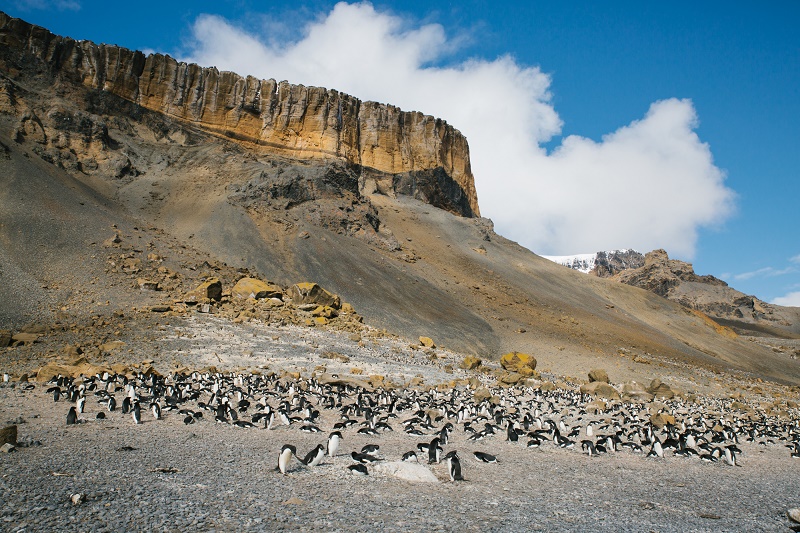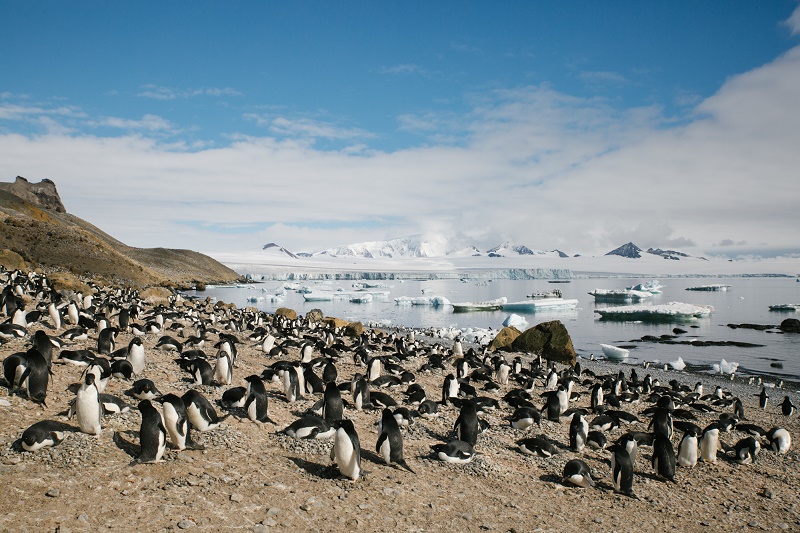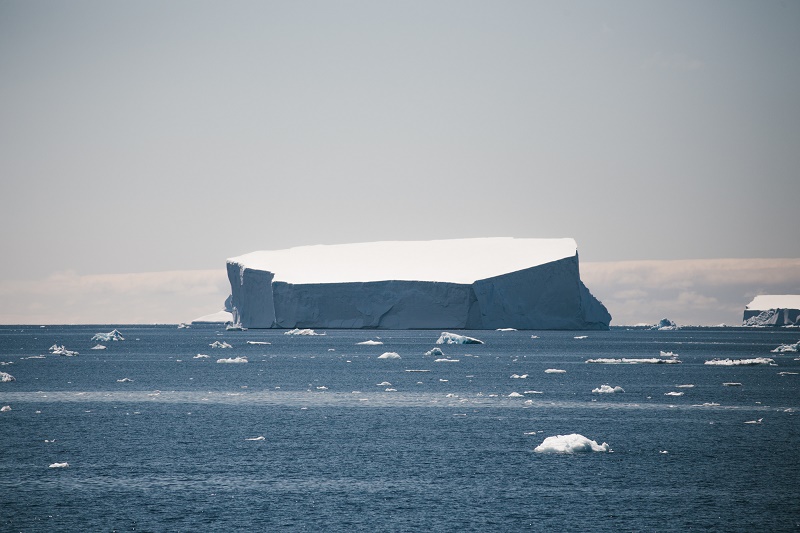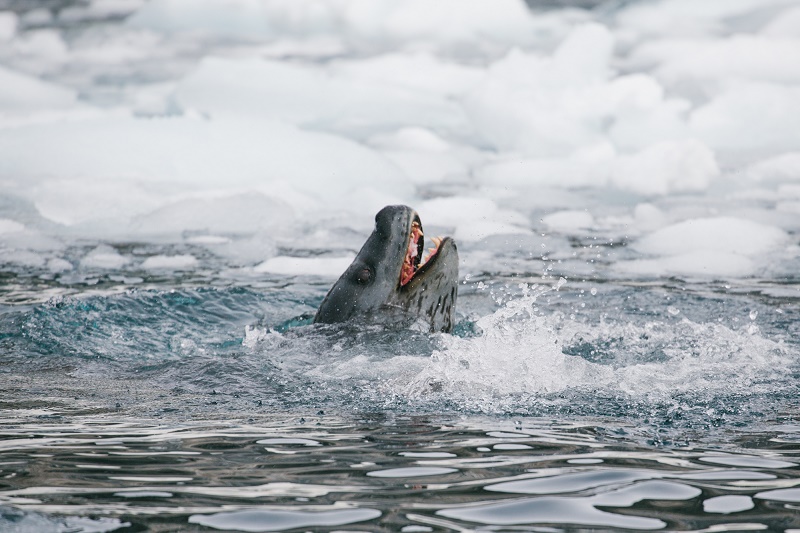Aboard The Greg Mortimer Antarctica Cruise Ship
Debbie Antarctica Expert WildFoot Travel

Wildfoot Travel’s Polar expedition expert Debbie Grainger continues her account of her recent trip aboard the luxury expedition cruise ship The Greg Mortimer.
In my last article, I gave a detailed account of my recent trip to the Antarctic Peninsula along with my amazing kayaking adventures. This time, I continue my write-up of the Greg Mortimer and explain why a small Antarctica cruise ship is preferable to a larger ship.
Greg Mortimer Vessel Facts
The Greg Mortimer was built in 2019 and hosts up to 132 passengers in 76 cabins, as well as between 71 and 80 crew members. Flying the Bahamas flag, this adventure cruise ship travels comfortably at approximately 10-12 knots. Well known to be the first passenger ship to boast the X-BOW® icebreaker hull, a Norwegian design feature that makes for seamless and efficient movement through the water, the Greg Mortimer also has a class 6 rating that allows it to operate all year in the extreme polar environments. The ability to sail further and take on more remote waters, tricky conditions and rugged coastlines sets an adventure on this ship apart from the rest.
Landing Restrictions In Antarctica
The International Association of Antarctica Tour Operators (IAATO) – is an industry group that has resolved to set the highest possible tourism operating standards in its effort to protect the local environment. Their carefully implemented rules mean that only 100 people can set foot on land, at any one time. Plus, only one ship is permitted at a landing site at a time, meaning that you still feel on your own in this unique and pristine environment that perpetually surrounds you on your Antarctica cruise.
Greg Mortimer, and her sister ship, the Sylvia Earle (launched in October 2021), only carry an average of 126 passengers. At Wildfoot Travel, when we make a booking, we have to check that non-kayaking spaces are available because Aurora will not take more than 100 “landing” passengers on any one voyage. This enables them to maximise passenger time on land; everyone lands together and group rotation is not necessary, as it is on larger vessels. This is one of the key reasons to make sure that you book as early as possible.
Boarding Zodiacs Aboard The Greg Mortimer In Antarctica
On a typical day, the enthusiastic, experienced expedition team aims to get you all onto land at least twice a day. The team leader makes an announcement letting passengers know what time the zodiacs will start their trips over to the landing point. You are called to the mud room in two groups – starboard side and portside. This is alternated for each landing, giving everyone the chance of being off and on their way to land first.
To access the mud room, you go to the back of Deck 4 and down the steps to Deck 3. Each cabin has their own locker where you keep your outer gear, boots and life jacket. Once you are ready to disembark, you “swipe out” with your room key – this is so the crew have a log of every passenger’s whereabouts, and to keep tabs on the number of passengers landing. The zodiac platforms open out from both sides of the mud room, although only 1 is normally used. The kayakers have their own platform at the back of the vessel, which keeps them out of the way of the zodiacs, meaning that exiting the Greg Mortimer is always quick and efficient, resulting in more time ashore.
What You Will See
For anyone who has ever dreamed of being an explorer, this is about as close as you can get: total immersion in the landscape, whether you are on land, in a kayak, on a zodiac or still onboard the ship. Towering icebergs create the backdrop to your Antarctic seascape and as you travel out into the icy seas on the zodiac, more stunning glacial features drop into the deep blue waters of the ocean. Travelling by zodiac offers the opportunity to reach the tiny hidden coves and bays that remain beautifully undisturbed and untouched. These wonderful pieces of paradise are home to many of the resident wildlife, such as penguins. You’ll also be able to spot seals, whales and a plethora of birdlife, and your expert guide will be on hand to answer any wildlife questions you may have along the way.
The zodiacs flit to and fro, transporting passengers 10 at a time to land. Once you have landed, it’s up to you how long you stay out there. My daughter always tried to be on one of the first zodiacs out and the last one back, to maximise the amount of time given with the wildlife and the landscape.
A Couple of Do’s and Don’ts Onboard a Zodiac
- It is so important to layer up when you head off the main ship. The weather can change in a moment! Pack sunglasses – the glare can be quite debilitating. Also, if it snows, sunglasses or goggles can be a welcome protection.
- Just take one bag – keep everything together so there is less chance of losing something. Gripping each other by the wrist (sailor’s grip) when manoeuvring on and off the boat is the safest way to help each other.
- Cameras should always be kept around the neck. Have a lens wipe handy too, as splashing is commonplace. Wear your life jacket.
- Listen to safety instructions.
- There is no toilet on board, so make sure you go before the excursion.
The Small Antarctica Cruise Ship Experience
Another reason to choose a small vessel is that you encounter more solitude and greater flexibility if tides, currents, ice or weather dictate a schedule change. Due to thick sea ice, we encountered a couple of itinerary changes, however this had absolutely no impact on our time ashore. Had we been on a larger Antarctica cruise ship, we may not have been able to have had a landing on those days.
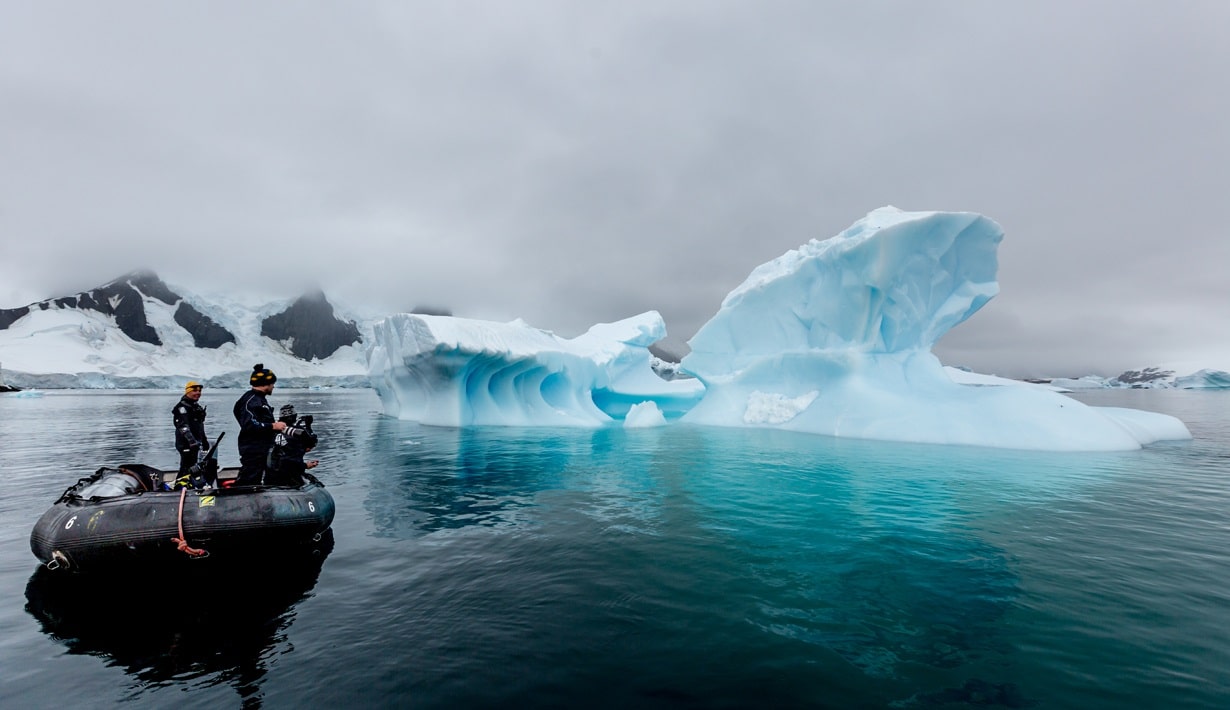
Who Was Greg Mortimer?
Greg Mortimer was the first Australian to summit Mount Everest, K2, Annapurna II and Chongtar without the use of extra oxygen. He was an acclaimed mountaineer and adventurer who established many new climbing routes in Antarctica and pioneered ship-based adventure travel to both Antarctica and the Arctic.
Greg’s first mountaineering experience was watching climbers on the Three Sisters in the Blue Mountains and from this moment he knew what he wanted to do. While studying geochemistry and geology at Macquarie University he spent every spare moment climbing in New Zealand, the UK, the Alps and South America. After graduating Greg worked as a geologist and a survival training instructor but also as a Scientific Affairs Advisor for the New Zealand Antarctic Division. Shortly after he began climbing the big peaks he pioneered a new route on Everest that is now known as “Greg’s Gully’.
In the early 1990s Greg Mortimer set up a company to take tourists to Antarctica by ship. Aurora Expeditions hosted the ultimate in adventure travel – an Antarctica cruise, Greg Mortimer style. Trips included mountain climbing, sea kayaking, and scuba diving in both the Antarctic and Arctic. He received three Australian Geographic Society medals and the Medal of the Order of Australia for service to mountaineering.
Luxurious But An Expedition Ship In Every Way
There is no getting away from the fact that the Greg Mortimer and the Sylvia Earle offer luxury. The cabins are large and spacious with great storage facilities, and beautiful soft furnishings and photos decorate the interior. Every meal was well-presented and delicious, and the service from the waiting staff was impeccable; There is a small, but well-equipped gym onboard as well as a lovely sauna.
Facilities on Board
We could wax lyrical forever and day about the incredible range of facilities onboard this Antarctica cruise. Greg Mortimer most definitely has your comfort and convenience at the very forefront of the ship’s design. Here are a select few facilities worthy of note:
It does however, still have the feeling of a true expedition ship; the expedition team mingled with the passengers around dining tables every mealtime and the lectures were always informative and engaging. We were also encouraged to be out on deck looking for wildlife opportunities as much as possible, whilst some of the expedition team explained in greater detail what we were witnessing. Aurora has an “open bridge” policy which means that you can pop into the bridge and have a chat with the crew any time and learn all about the navigational equipment onboard.
State of The Art Features
Designed and built by the Norwegian Ulstein Group of ship builders, the Greg Mortimer is the first passenger carrying ship to feature the Ulstein’s state of the art bow, known as the X-BOW®. The innovative design enables for more efficient, safe, sustainable and stable travel in the tricky waters of the polar regions. The bow, along with the Rolls Royce dynamic stabilisers provide more comfort when sailing through extreme and rough conditions.
Lecture Theatre and Lounge
Throughout the trip we use the theatre to host local wildlife specialists, naturalists and expedition leaders who offer presentations on their area of interest – a wonderful way to expand your knowledge. The theatre is comfortable and well laid out. There are cocktail tables, swivel chairs, and high-backed bar stools to give everyone a chance to have a clear view. There is a state of the art sound system and several screens so you are guaranteed not to miss a thing.
Dining Bars and Lounges
Serving everything from breakfast through to dinner, the delightful dining room features tables for different numbers of guests. Dinner is a four-course affair served to everyone at the same time, in order to encourage socialising and the formation of new connections. Menus vary and everyone is catered for. Teas and coffees are available all day and house wine, beers and other drinks are served with meals.
Our bars serve wines, beers, cocktails and Champagne and are the central hubs of the ship’s social scene. With a daily happy hour, it is in the bars that you will find plenty of opportunity to mingle.
Observation Decks
We have several observation decks onboard designed for wildlife watching and photography mainly, although people love to just meet up and marvel at the scenery from them too. The one on deck 5 is sheltered, and an area on deck 7 doubles up as a sun deck. We are also very proud of our hydraulic viewing platforms that expand out from near the bow, offering even more of an immersive wildlife viewing experience.
There’s More
The ship also features a spa, sauna and gym, a library and a mudroom, which is perfect for storing and drying out your boots and waterproofs between excursions.
The brilliant design of the bow means that windows can be located closer to the water than in older ships. Guests can view down into the ocean and straight ahead. Passengers get the incredible opportunity to witness the magnificence of an iceberg as it appears ahead on the horizon.
The streamlined shape of the bow and hull also make for a more efficient use of fuel, more stability and less speed loss in waves. There is minimal spray and less bow impact, therefore not as much slamming and vibration as there would be otherwise.
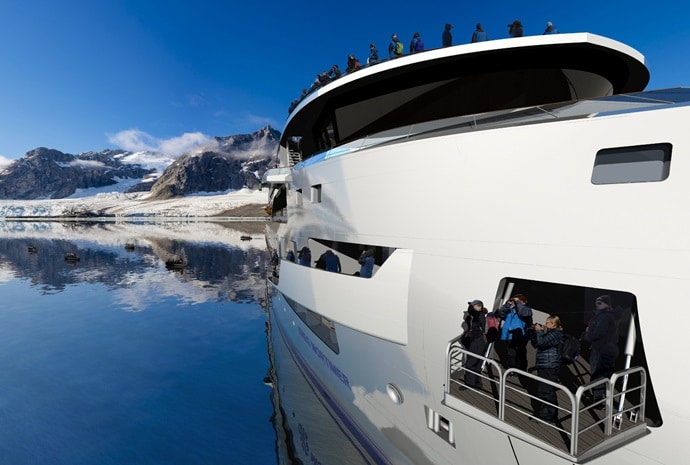
Photography Workshops
On all of the Antarctica cruises, there is a dedicated photographer. We found the photo workshop to be so educational and informative on our trip – learning lots of little tips on how best to position our cameras, lighting techniques and hints on how to choose the right moment to click, so that you get that unique photo.
Capturing Wildlife Through the Lens
Hard to believe that this is the only continent on Earth that humans have been unable to inhabit. The constantly freezing temperatures and unpredictable ferocity of the storms have made the region quite inhospitable. Antarctica has no terrestrial animals and yet the region is well known as a haven for wildlife photographers. In the sea and on the shores, wildlife prevails and throughout the summer the species that have adapted to make this continent their home become the perfect photographic subjects.
One day you may capture a fighting Elephant Seal, while the next an Emperor Penguin with its tiny chick making their way to the shoreline. The beauty of photographing these species in the wild is the unpredictability of their behaviour. Every photo is a once in a lifetime shot, and with the incredible backdrop landscape of the spectacular untouched mountains and glistening glaciers, your take-home pics will be unique in more ways than one. You may find here too that the animals are quite used to being the centre of attention and have no fear of photographers. They seem indifferent to your presence and so you can click away with no worry they will run or fly away.
During the summer, it never gets dark and the axis of the earth means that even at midnight the ethereal hues of the sun’s rays create even more of a special atmosphere.
Responsible Travel
Such an important factor these days: due to the combination of streamlined Ulstein X-BOW and the Rolls Royce dynamic stabilisers, the crossing of the Drake Passage is more comfortable and stable. The reason for this is that the shape of the X-Bow cuts through the swell so that passengers feel less vibration and disturbance. The shape also makes for a quicker crossing, meaning that you arrive in the South Shetlands by lunchtime on day 2, as opposed to day 3 on other Antarctica cruise vessels. Another bonus, environmentally speaking, is that the shape also helps reduce fuel consumption by up to 60%, and in a world that is constantly thinking of how to protect our planet, the Greg Mortimer boasts the lowest polluting marine engines in the world. Her state-of-the-art engines deliver an 80% reduction in emissions!
The onboard desalination plant even converts seawater to freshwater that’s safe to drink. This means they can carry less freshwater on sea crossings, further reducing fuel consumption. And then there is the virtual anchoring that I briefly mentioned last time. This is a combination of GPS, steering technology, propellers and thrusters, which allow the vessel to hold position. This protects the sea floor and minimises the damage caused by conventional anchors.
Plastic: Most single-use plastic items have been replaced with sustainable alternatives, whilst Aurora’s aim is to eliminate single-use plastic altogether.
Dining: All onboard seafood is sourced in accordance with the Marine Stewardship Council guidelines
Cleaning products: Biodegradable, phosphate free and non-bioaccumulative products are used as much as possible.
Recycling: Bins are provided onboard to separate waste and recyclable items to help reduce landfill
Beach Clean-ups: A proud member of the Sea Green – a new waste recycling initiative at the Port of Ushuaia. Other beach clean-up initiatives such as Clean up Svalbard are also supported.
We are excited to announce that Aurora Expeditions also runs cruises on the Greg Mortimer’s sister vessel, Sylvia Earle. Aptly named after the first woman to become Chief Scientist of the US National Oceanic and Atmospheric Administration, this Antarctica cruise ship offers fuel efficiency, smoother crossings and an enhanced forward viewing experience for its passengers in the form of a glass atrium lounge in the bow.
Hosting 126 passengers Sylvia Earle has an A1 Ice Class rating. Following in the footsteps of its sister ship, this Antarctica cruise vessel boasts the lowest polluting marine engines in the world and virtual anchoring too. On board facilities are stylish, modern and of the highest quality so you can expect the very best when you book an Antarctica cruise aboard the Sylvia Earle.
Check out these Expedition Cruises Aboard The Greg Mortimer with No Solo supplement
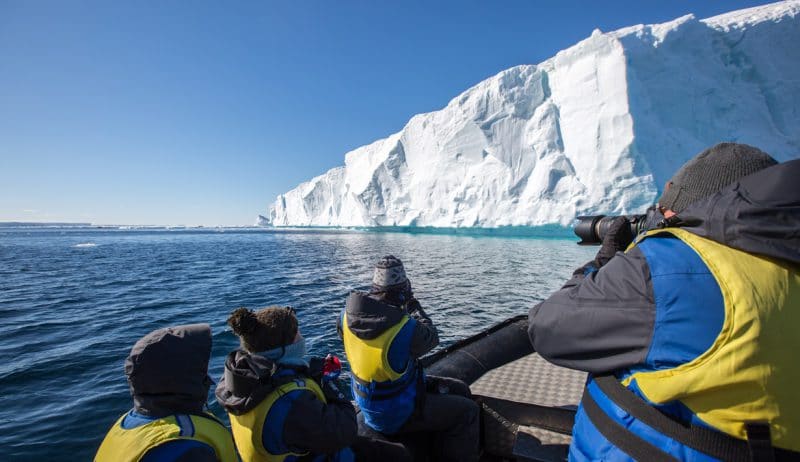
South Georgia and Antarctica Odyssey
Join in the fun on this exciting Antarctica cruise. Greg Mortimer’s innovative designers created a ship tailormade for making the most of an adventure wildlife trip in this incredible part of the world, that can be as extreme as it is beautiful. There’ll be opportunities to kayak, snowshoe and explore on a zodiac, as well as visit historical and scientific sites. Boarding the ship in Stanley in the Falkland Islands, you’ll set sail on the most amazing adventure through this unique and humbling wildlife paradise.
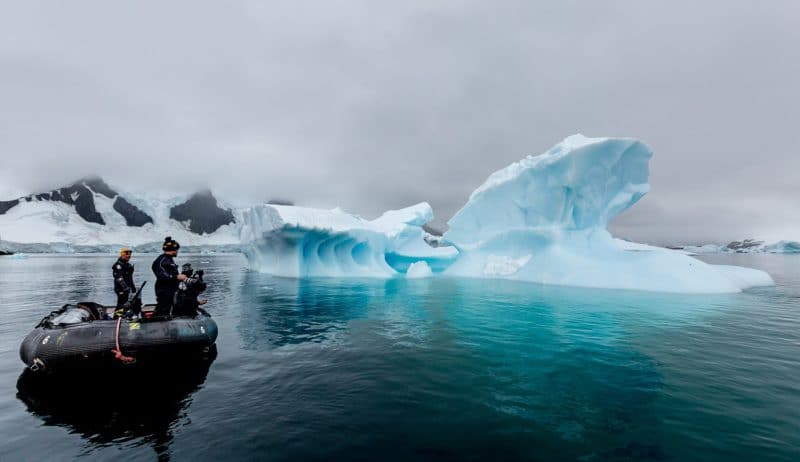
One of our most exciting expeditions onboard the polar vessel, Greg Mortimer, is a classic. Everyday, amid the backdrop of the most breathtaking scenery, you’ll fully immerse in the very fabric of the Antarctic Peninsula. The zodiac excursions are a highlight but you can also try your hand at kayaking, snowshoeing or even camping on the ice plateaus while onboard, spotting wildlife from the decks or attending lectures in the theatre are just a couple of the huge number of activities to look forward to. Stepping foot on the most magnificent continent on Earth is humbling enough but when you witness the spectacular wild landscapes and the majestic wildlife, this becomes a truly unforgettable experience.
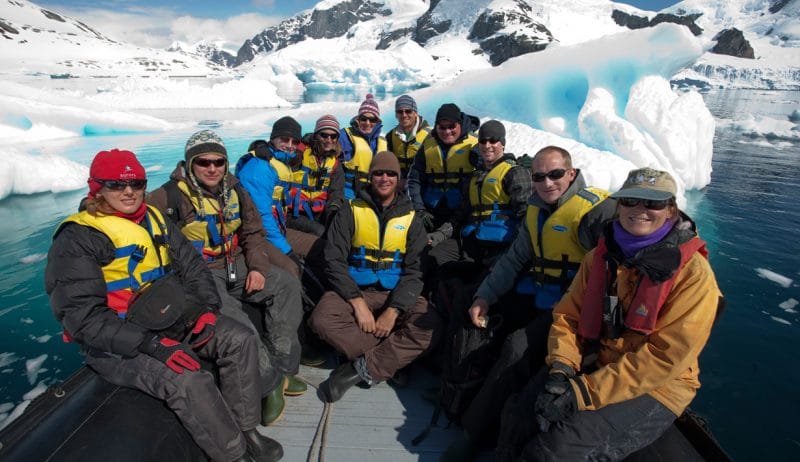
Antarctic Explorer
By missing out the crossings of the Drake Passage this fly/sail tip offers maximum time to explore the Antarctic continent. Joining the Antarctic cruise, Greg Mortimer – a ship custom built for your comfort and safety in this majestic wilderness, you’ll discover the stunning wild heart of this most remote and untouched continent. Towering icebergs and jaw-dropping natural formations form the backdrop to your every day, while before your very eyes wildlife abounds. From the vantage points of the ship or from a kayak or zodiac you can really immerse yourself in the lives of all the wonderful creatures that have made this place their home. Trips to historic and scientific sites are also included and the resident photography guide is onhand to help you preserve the memories you make on the most unforgettable of trips.
